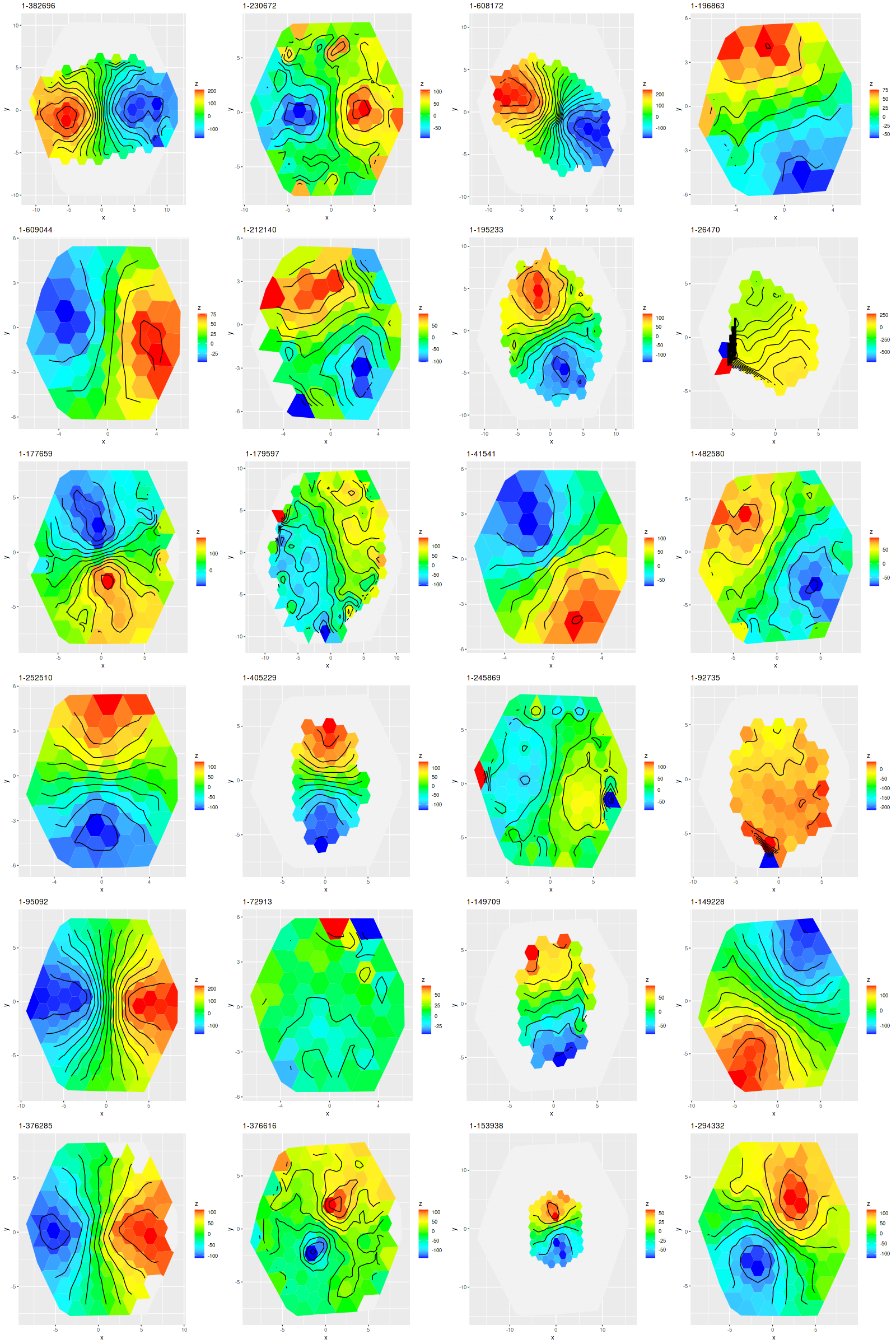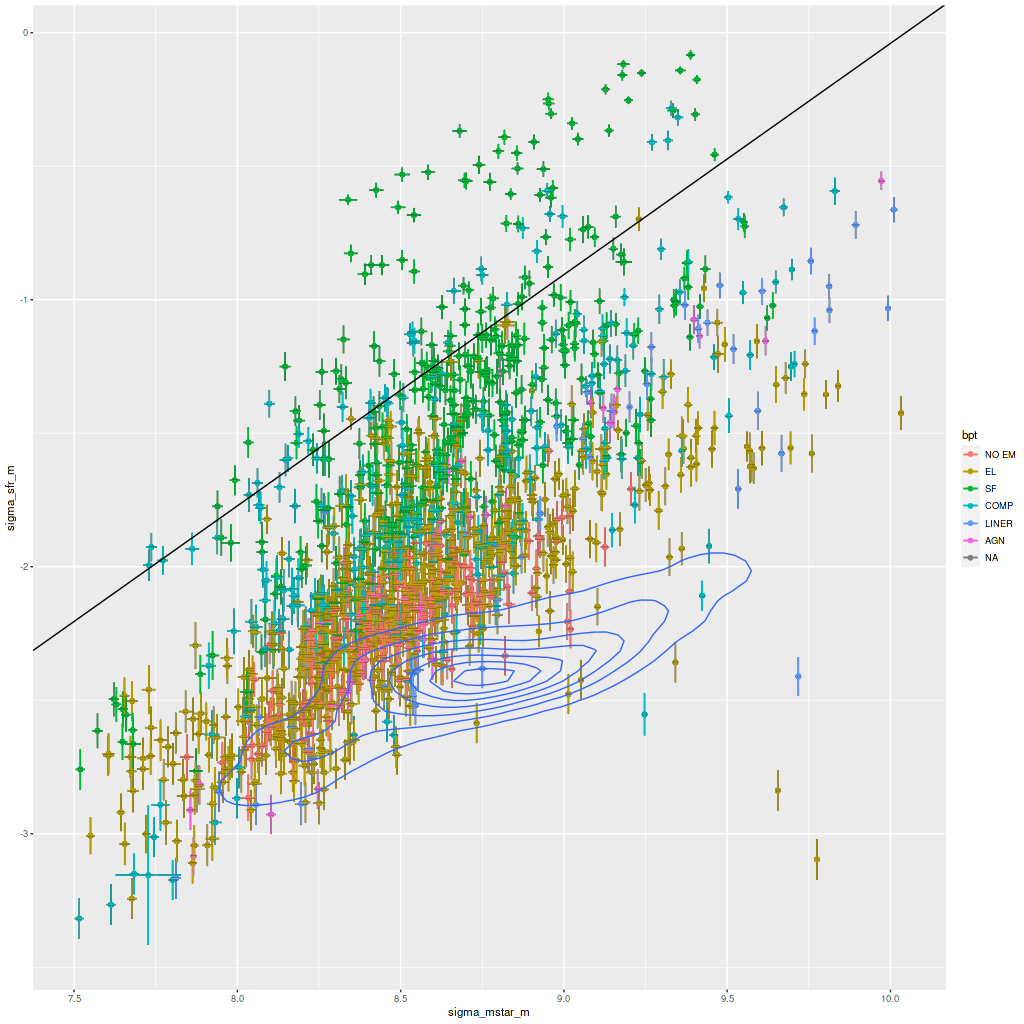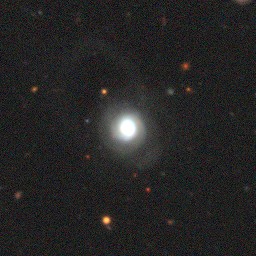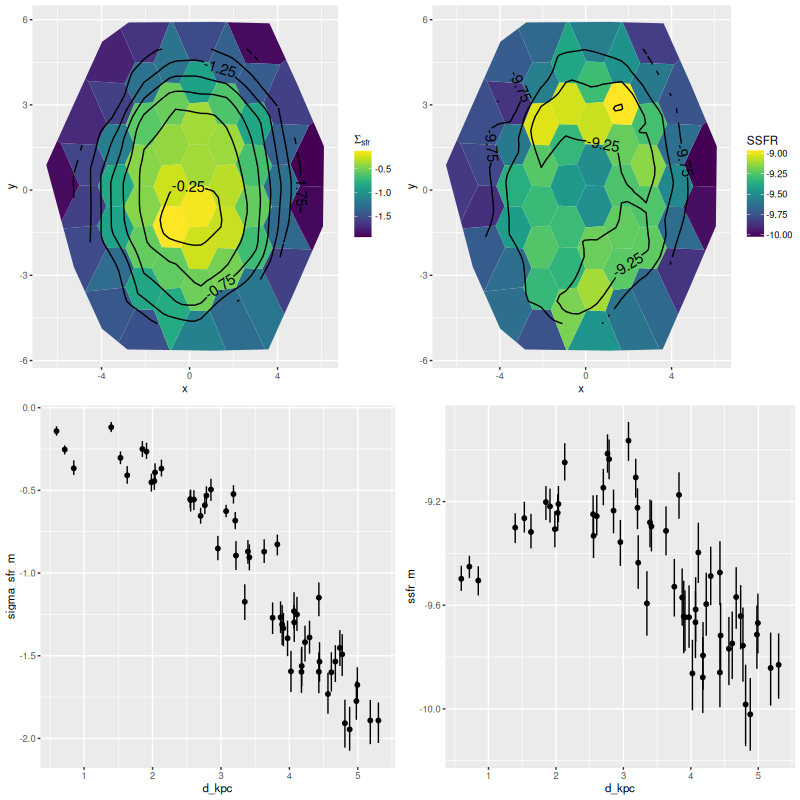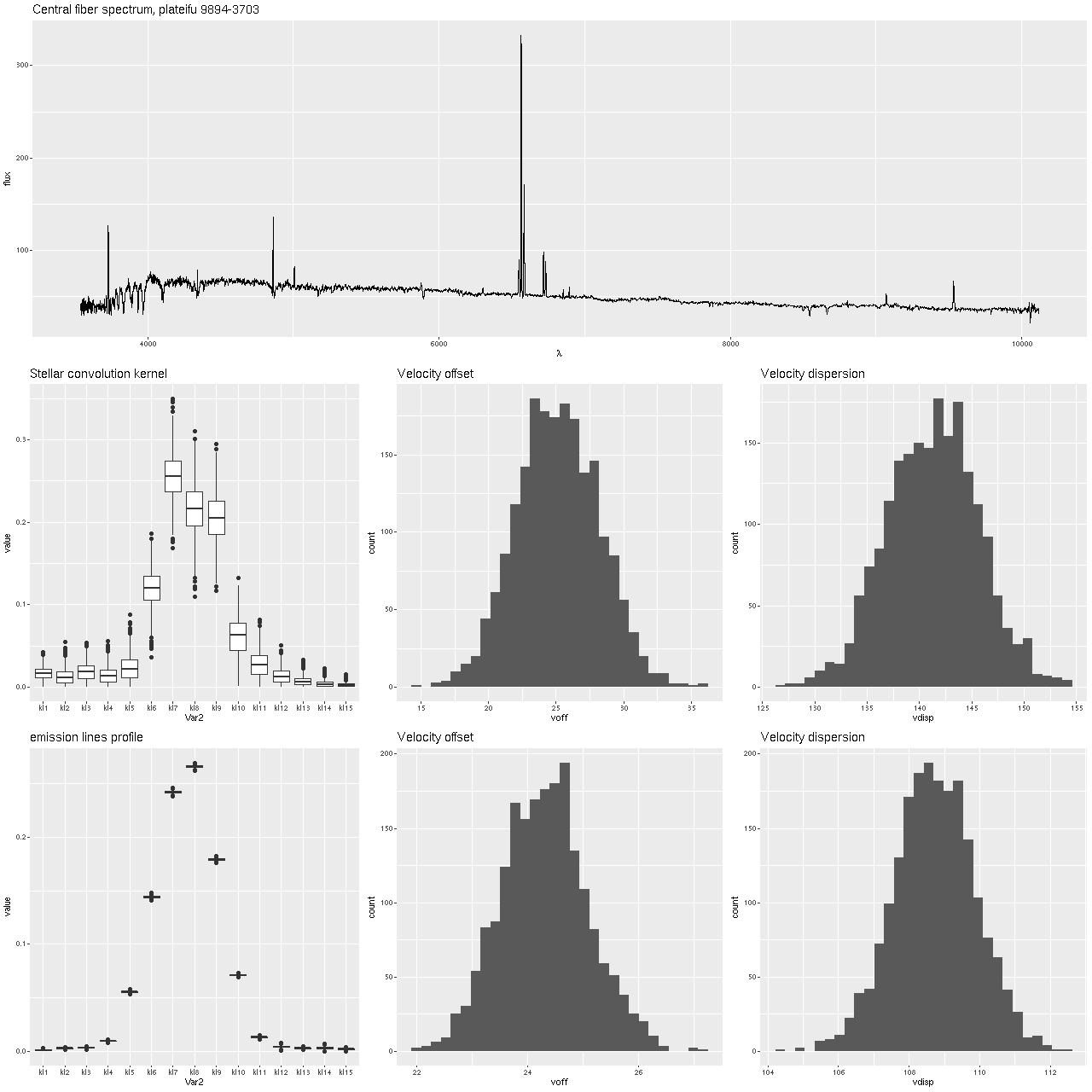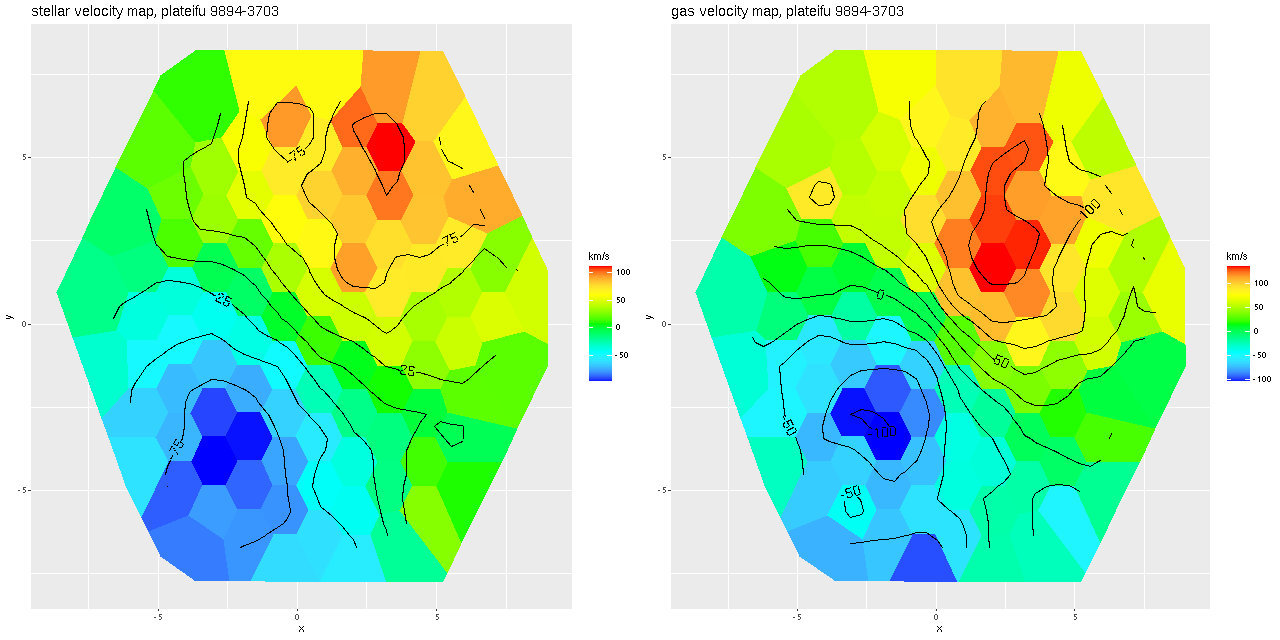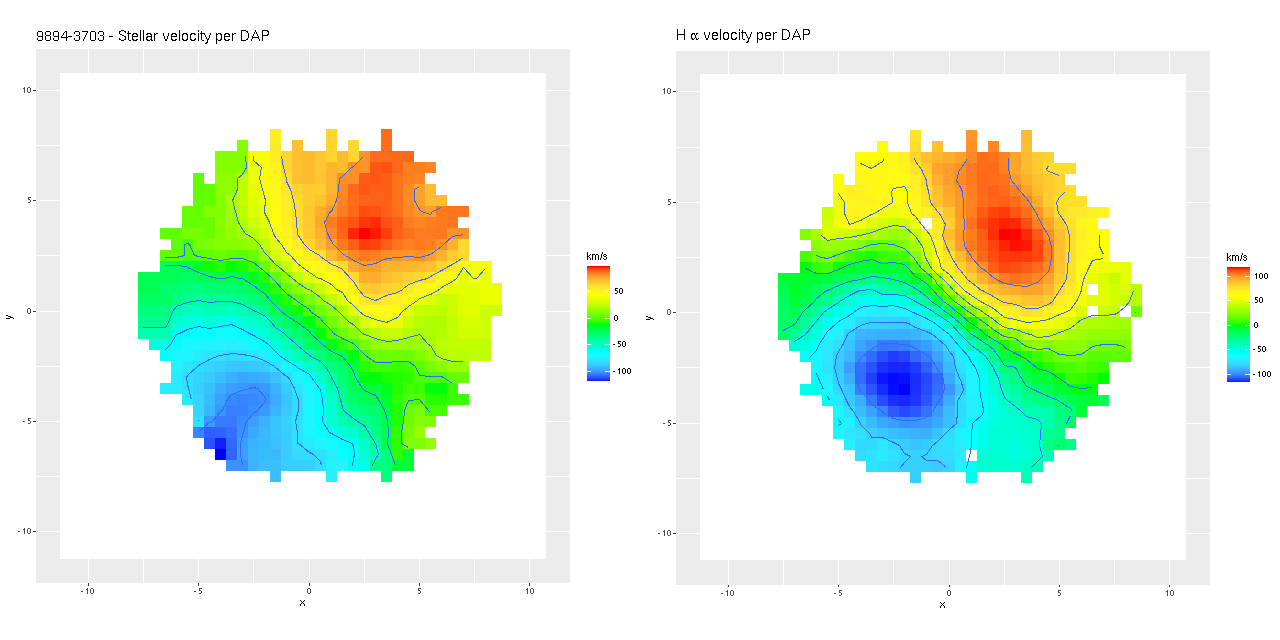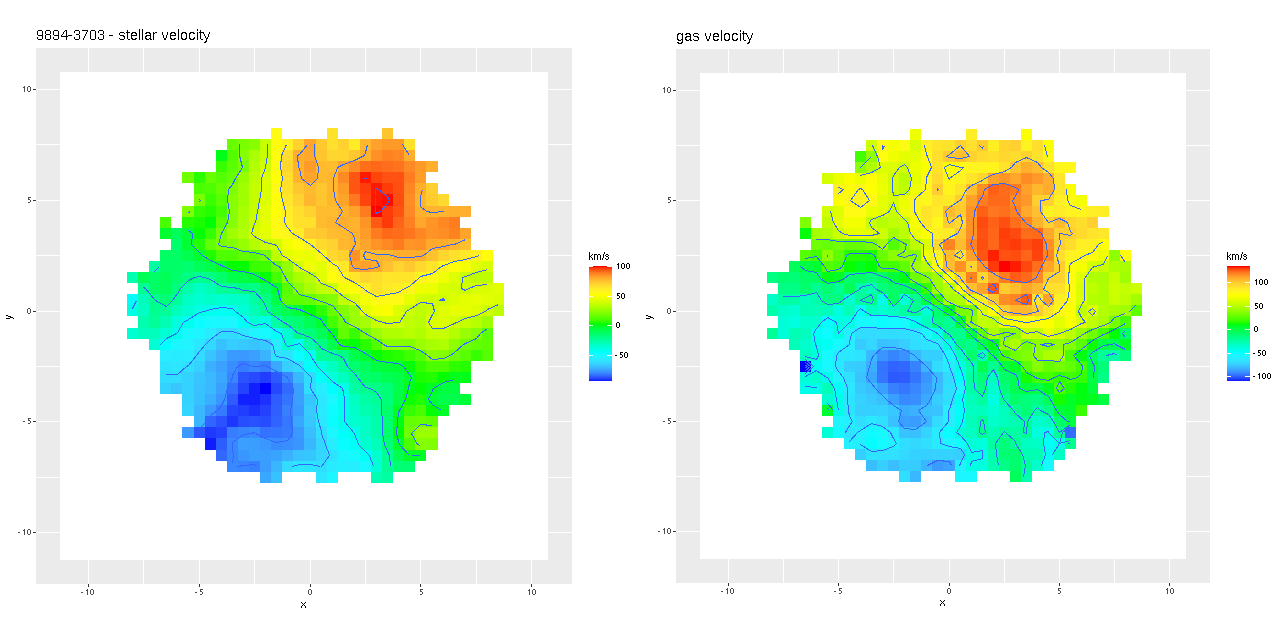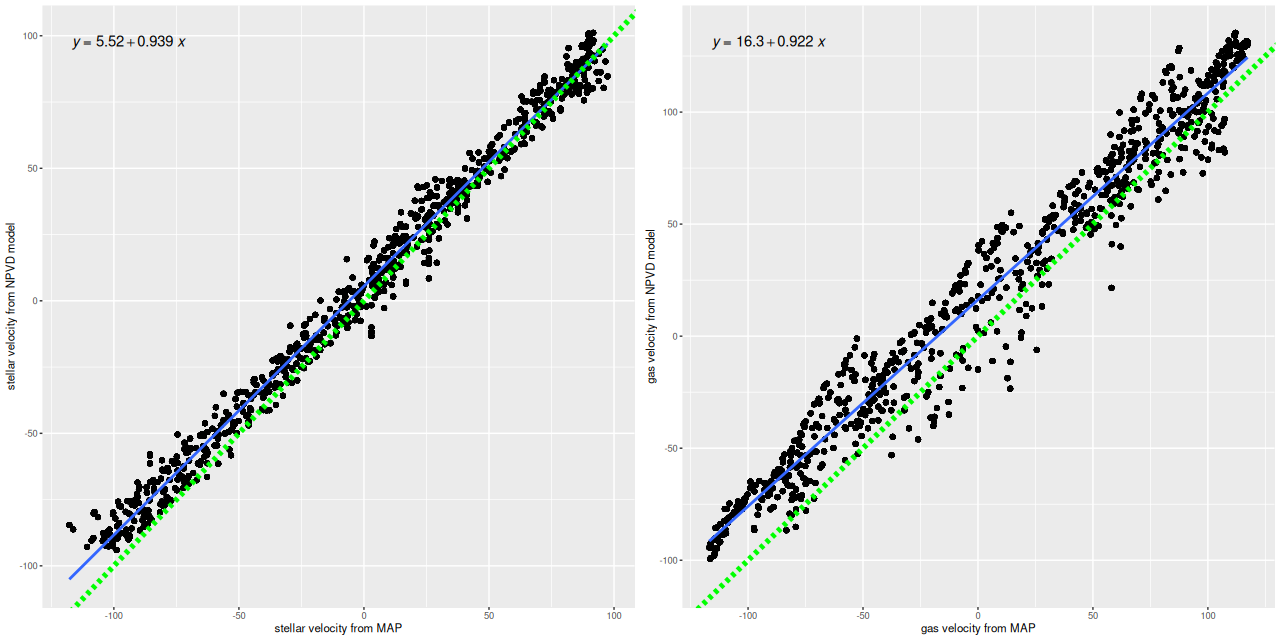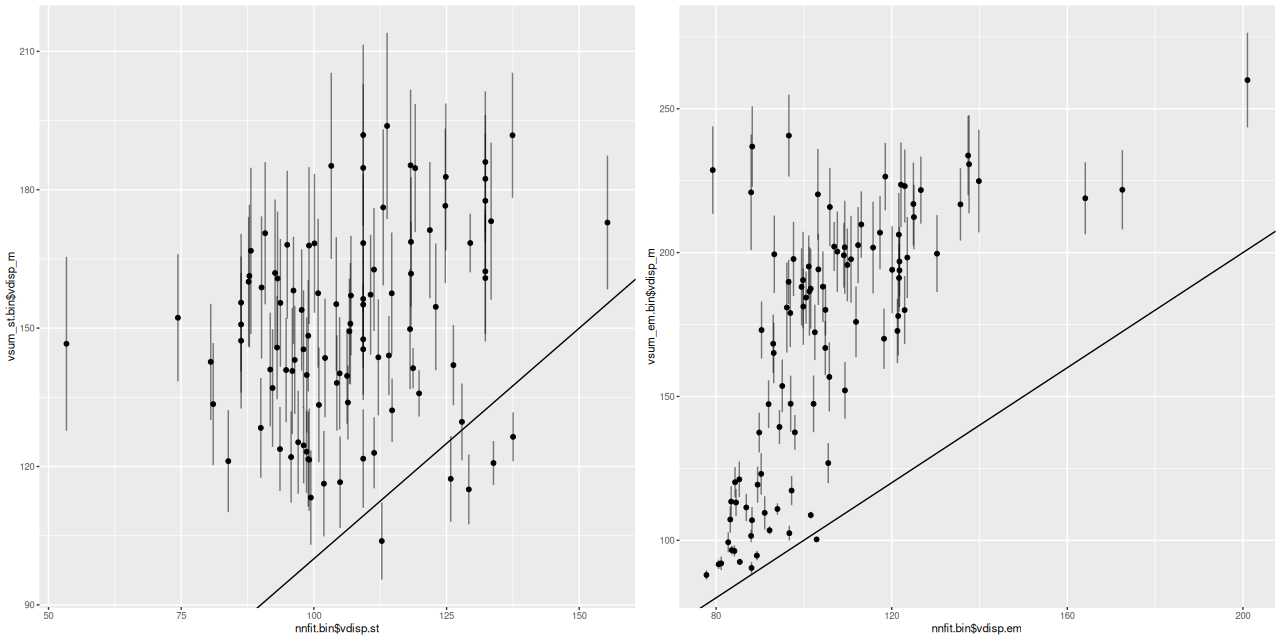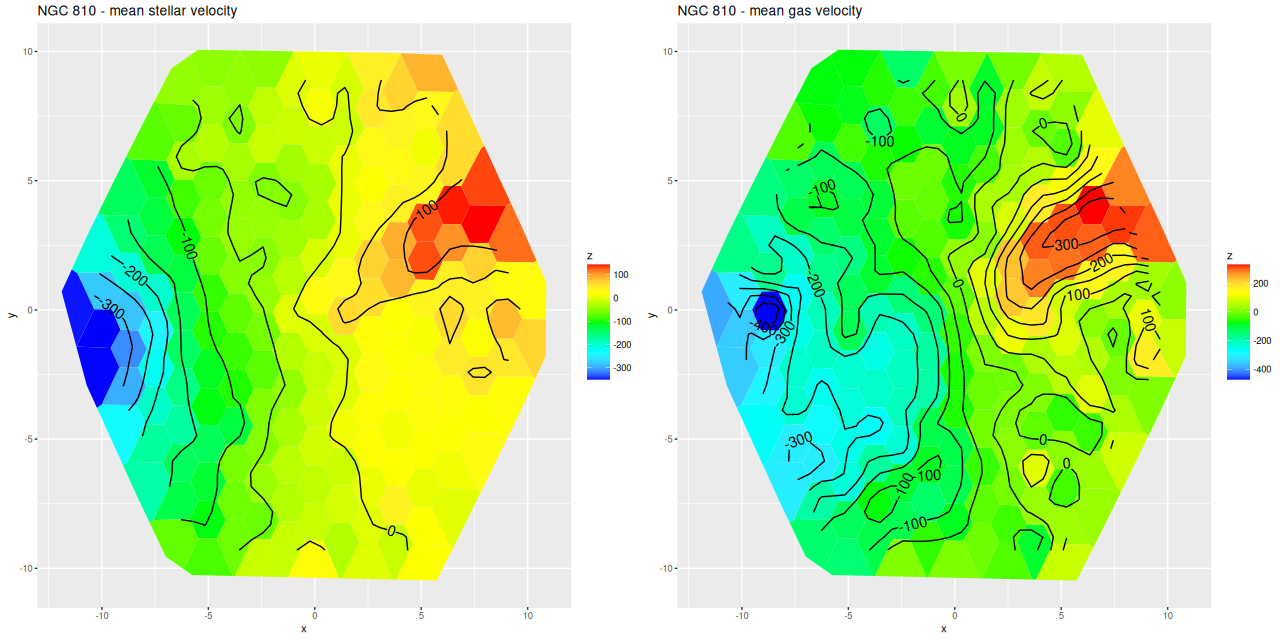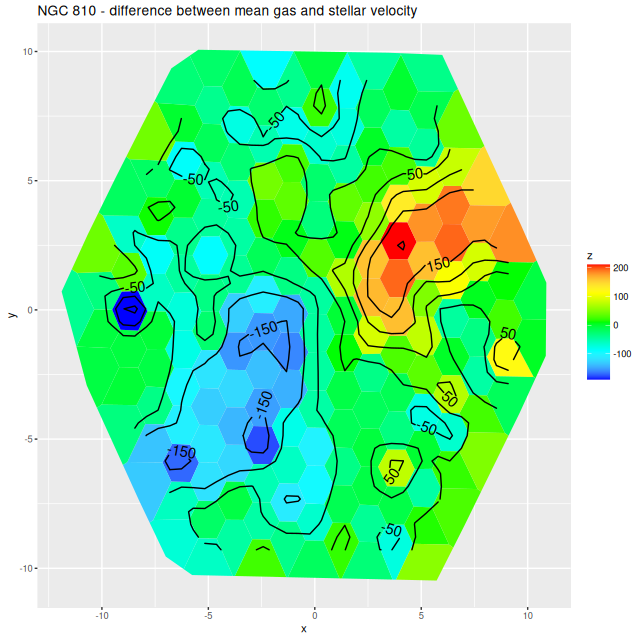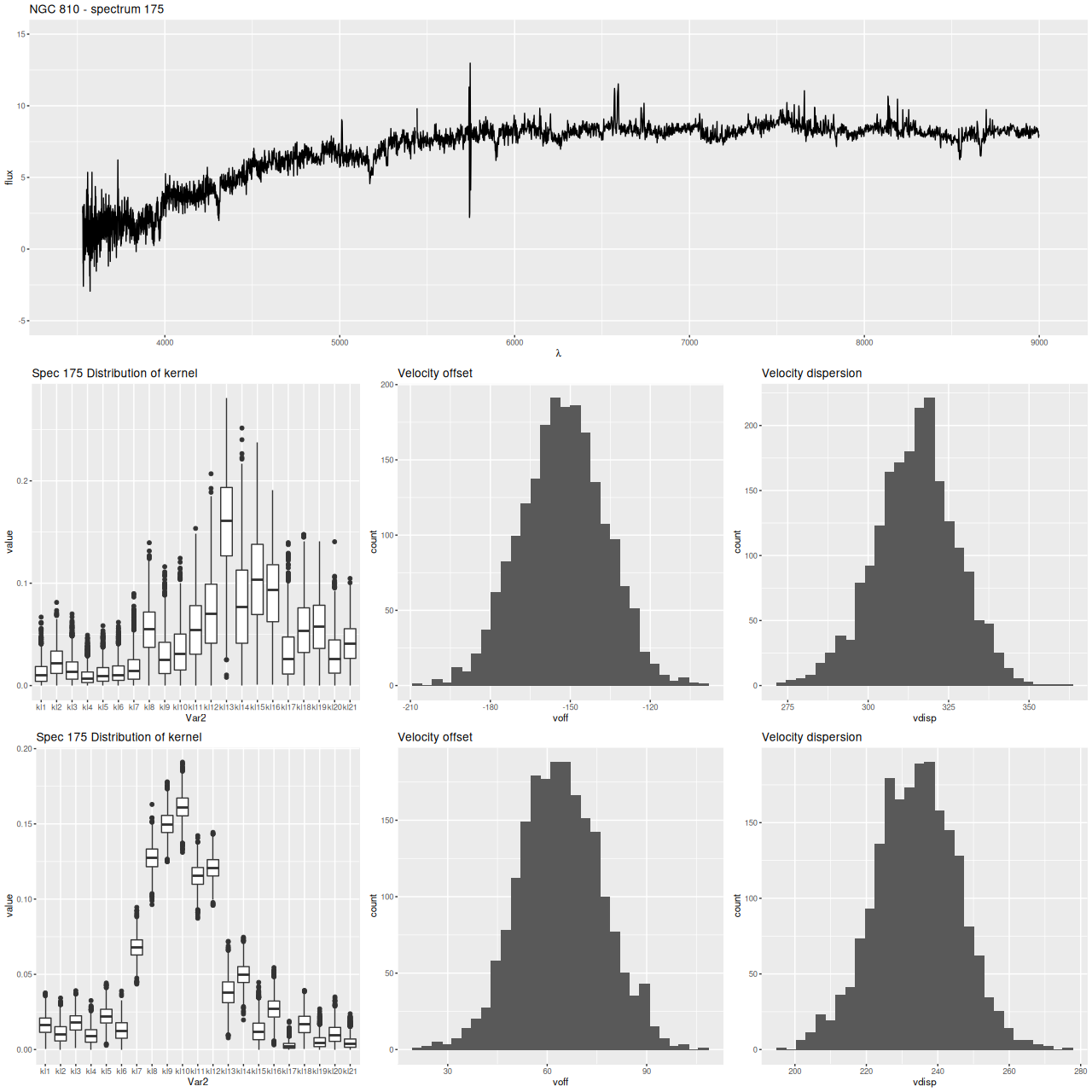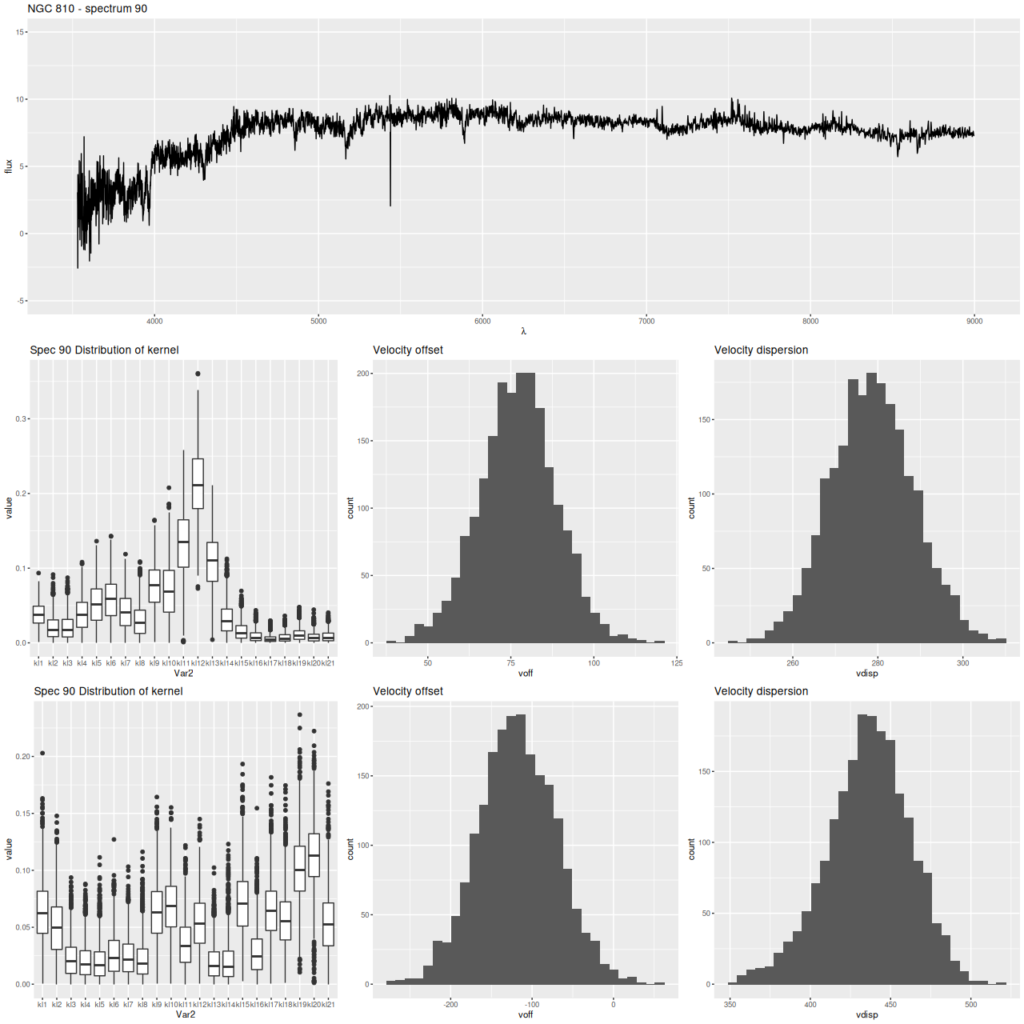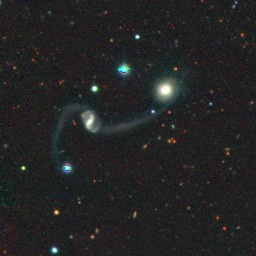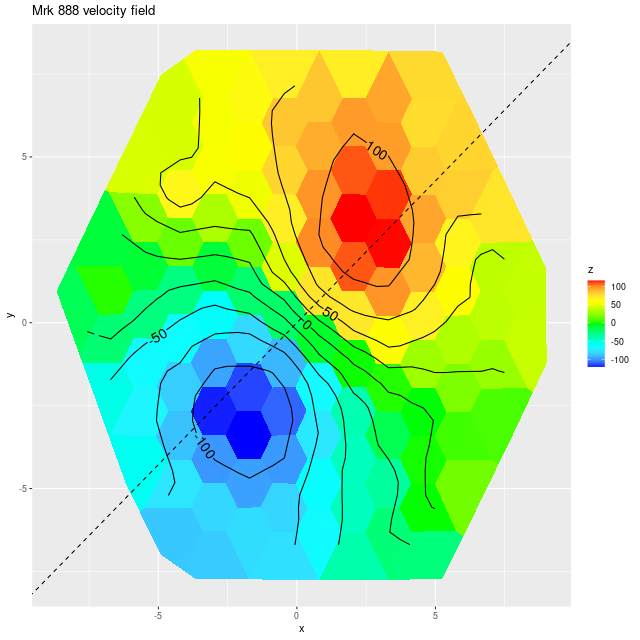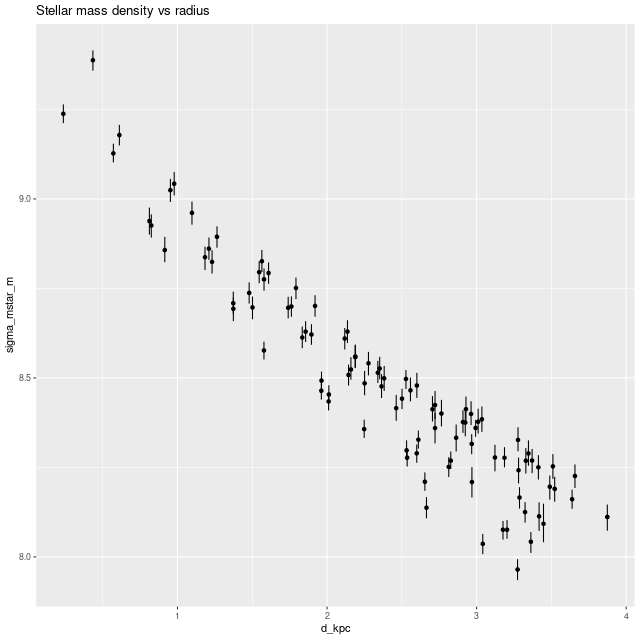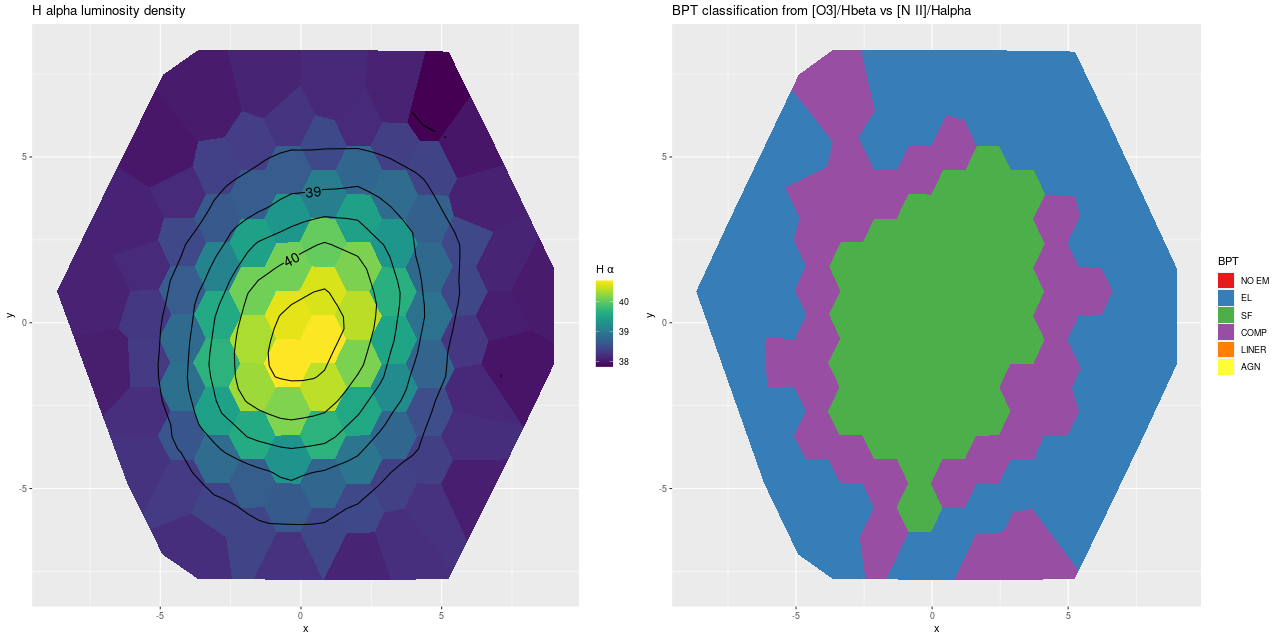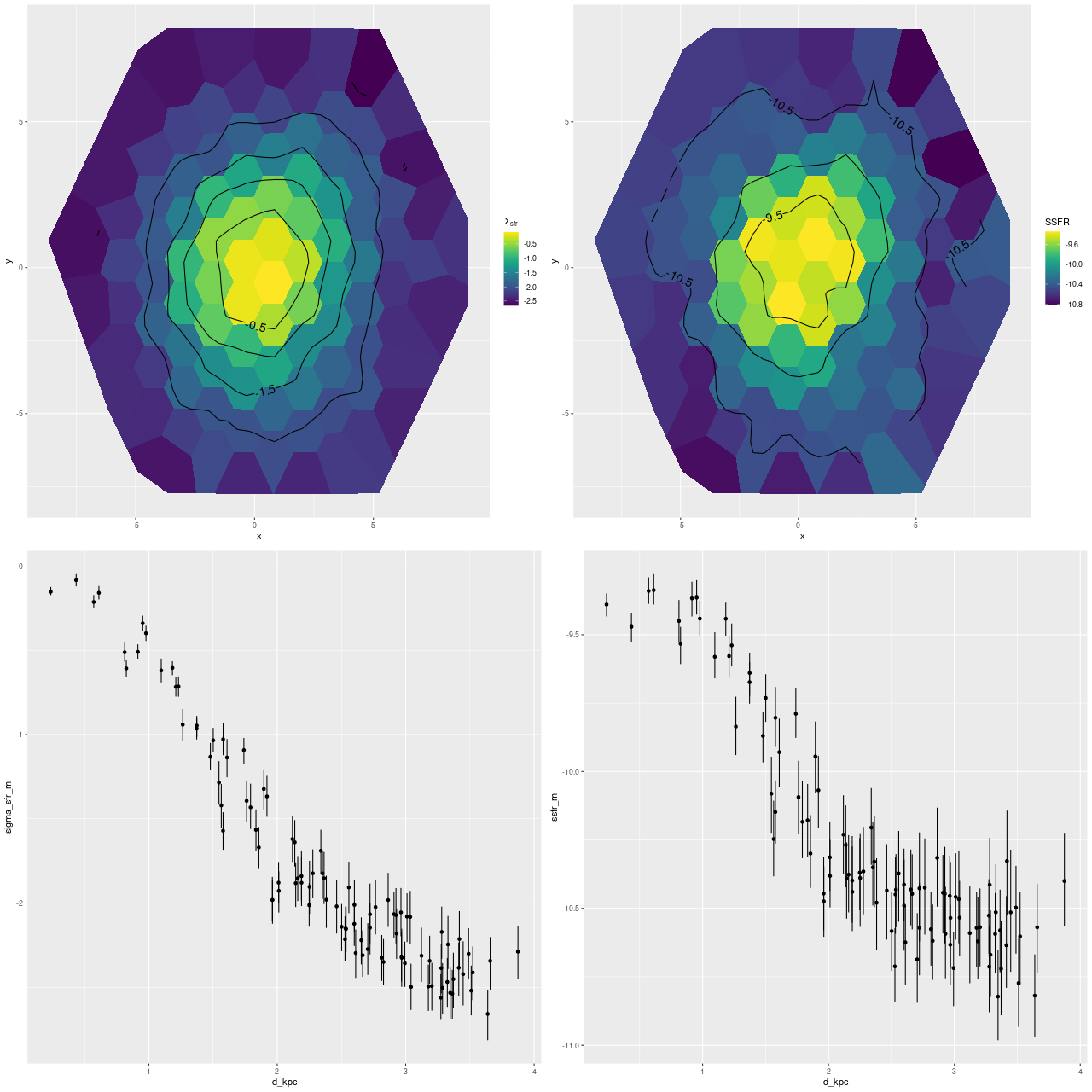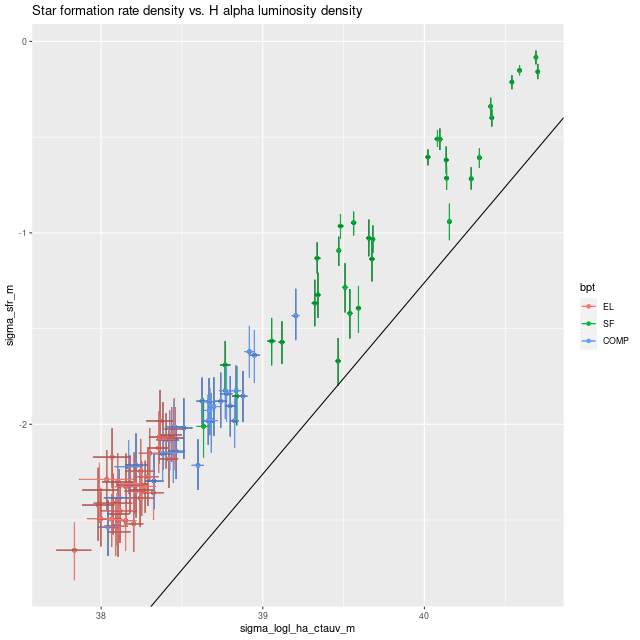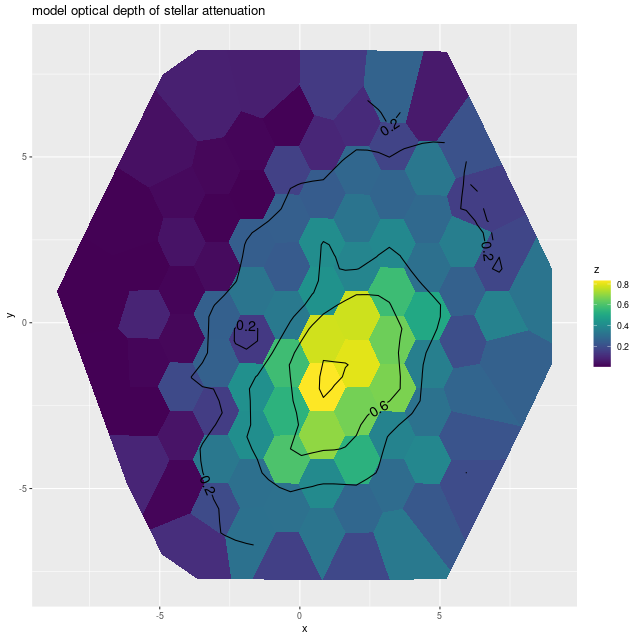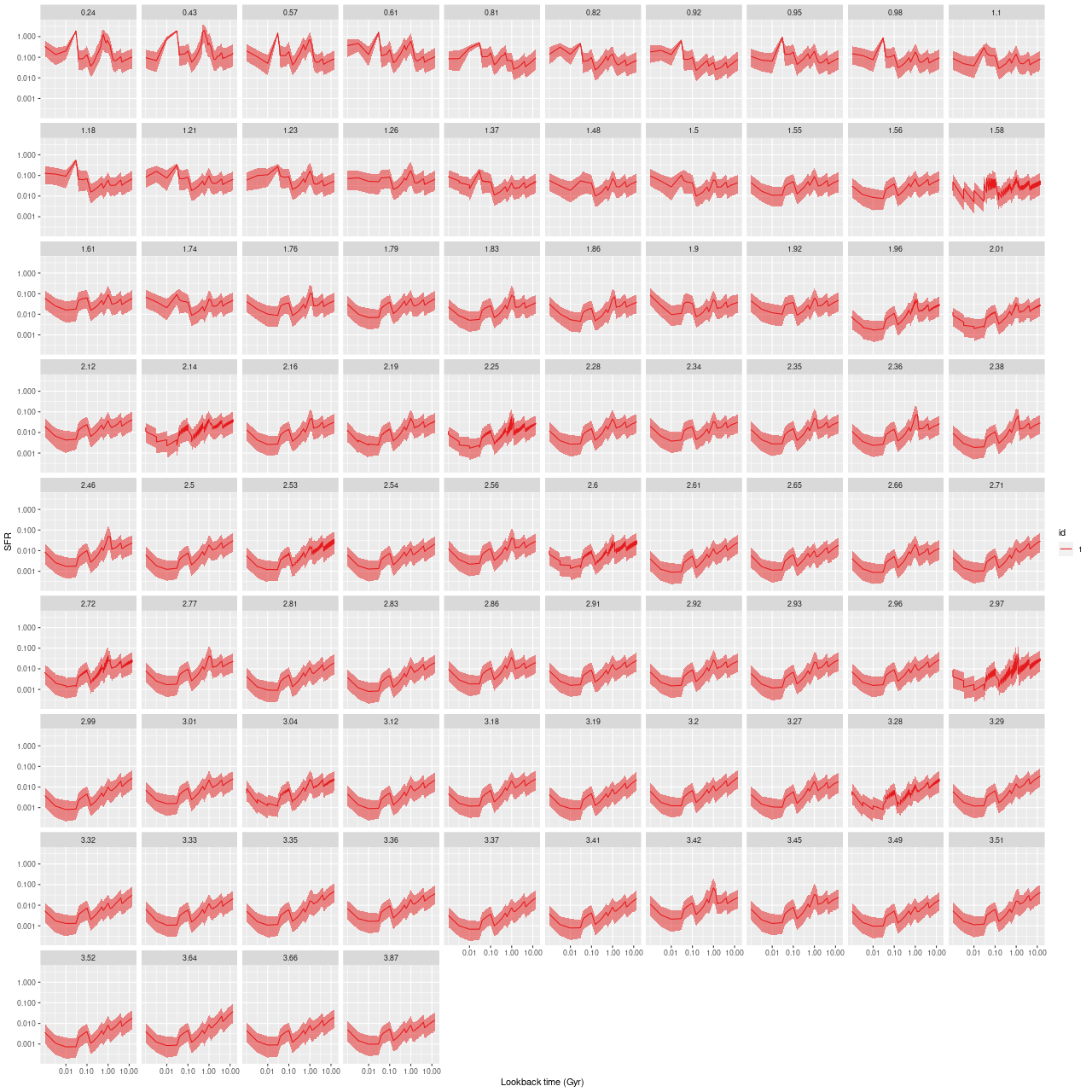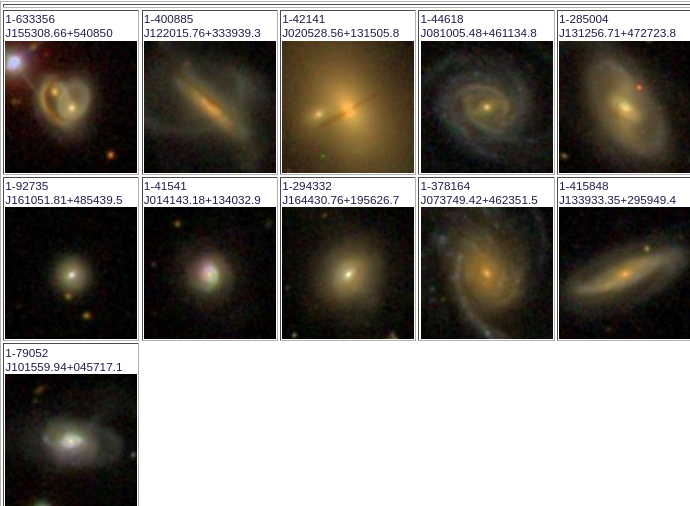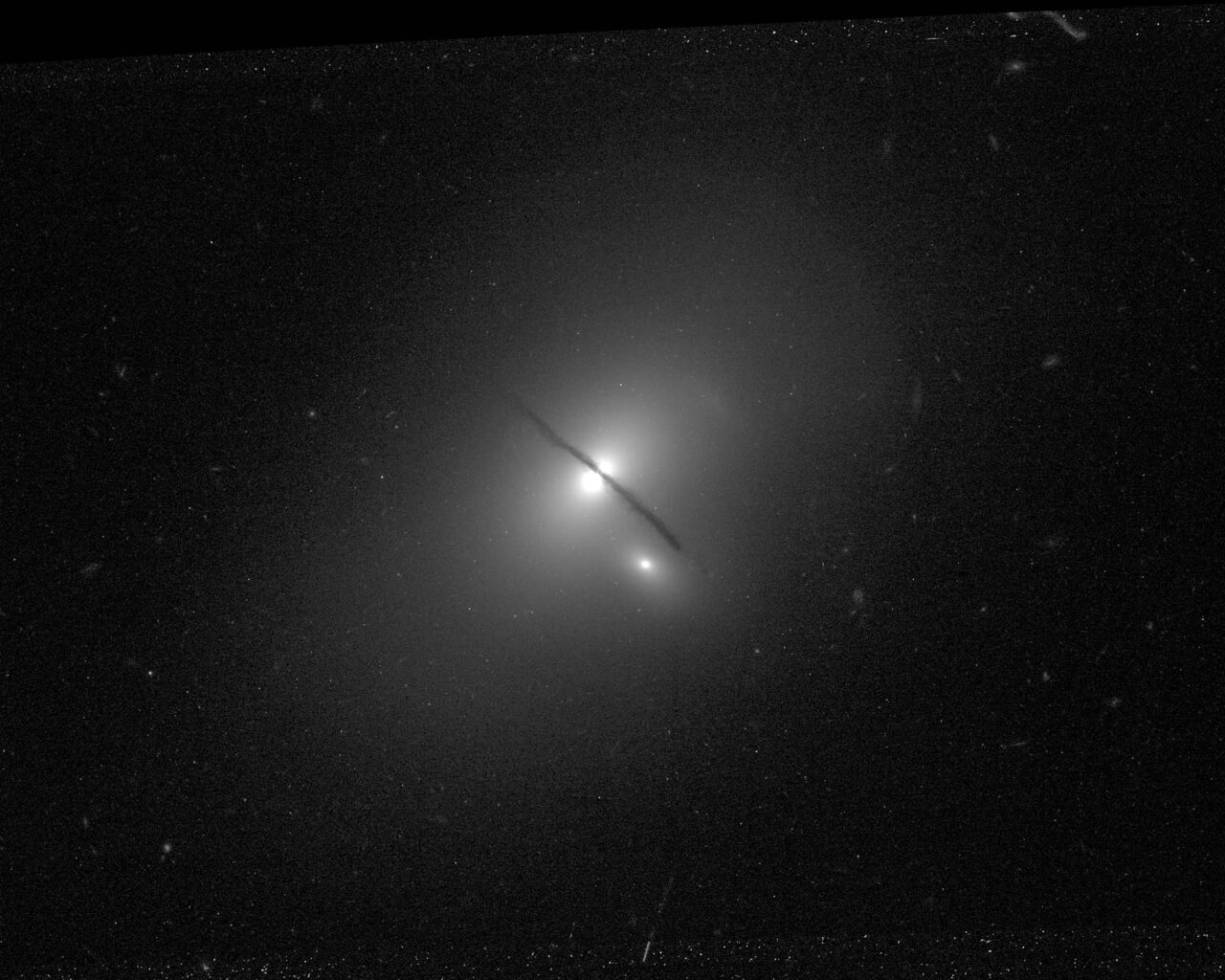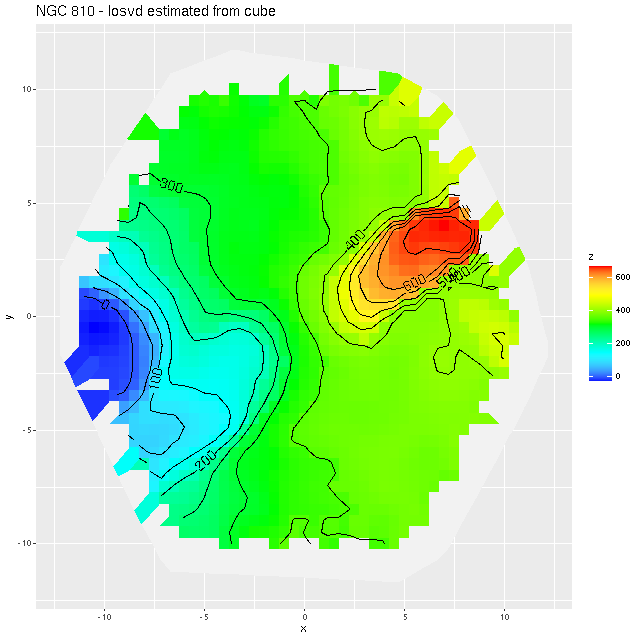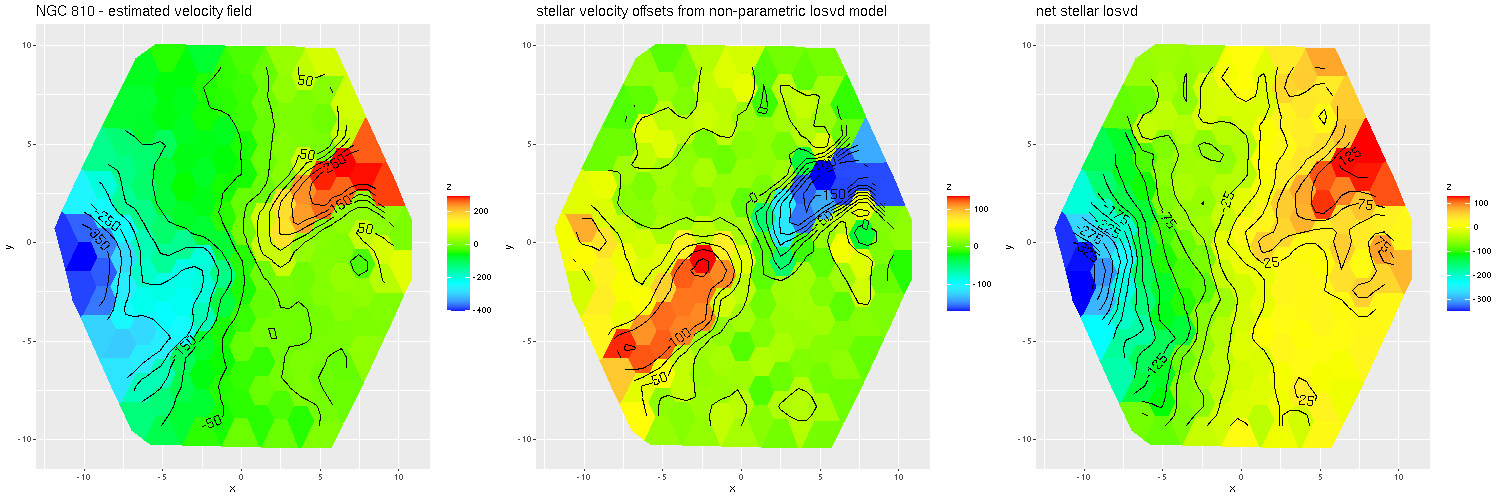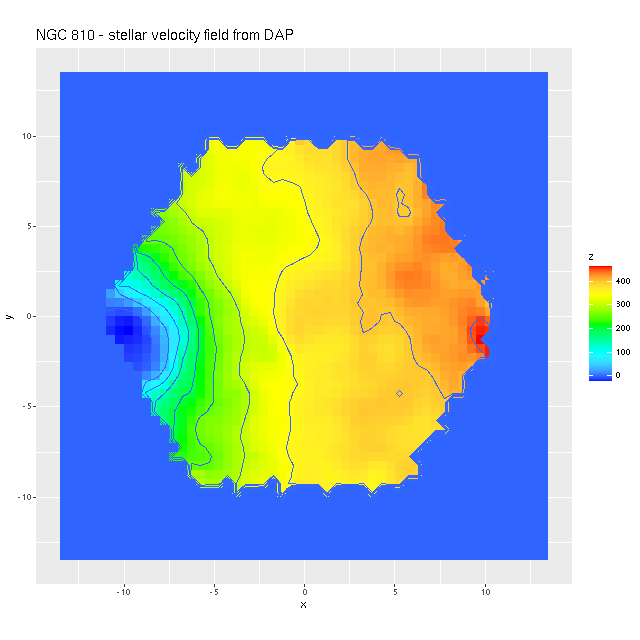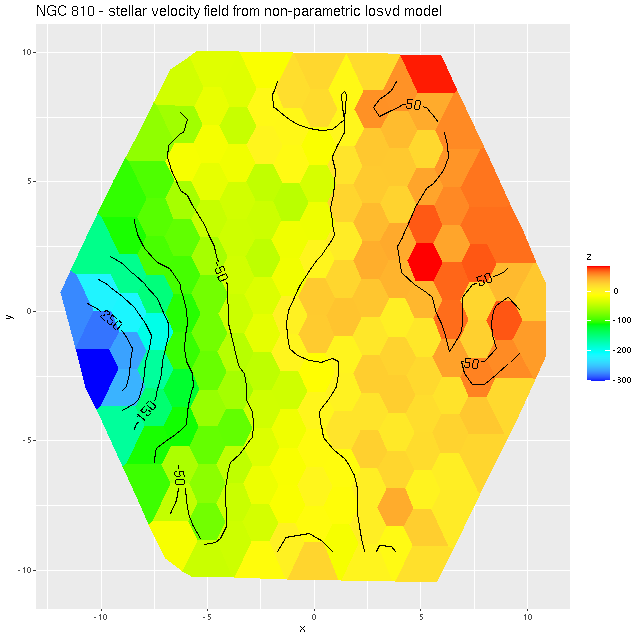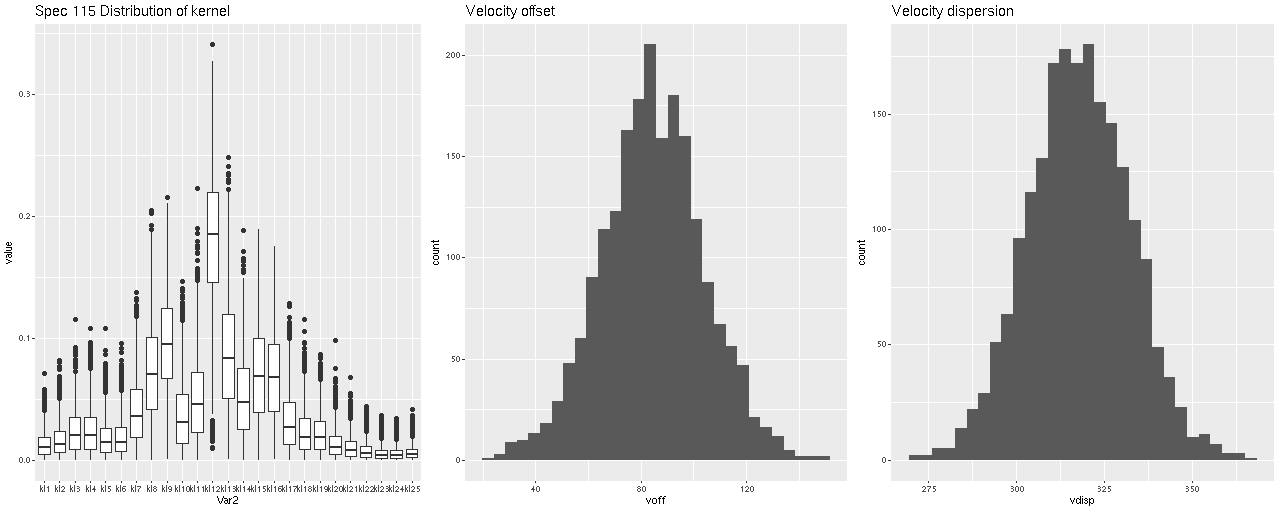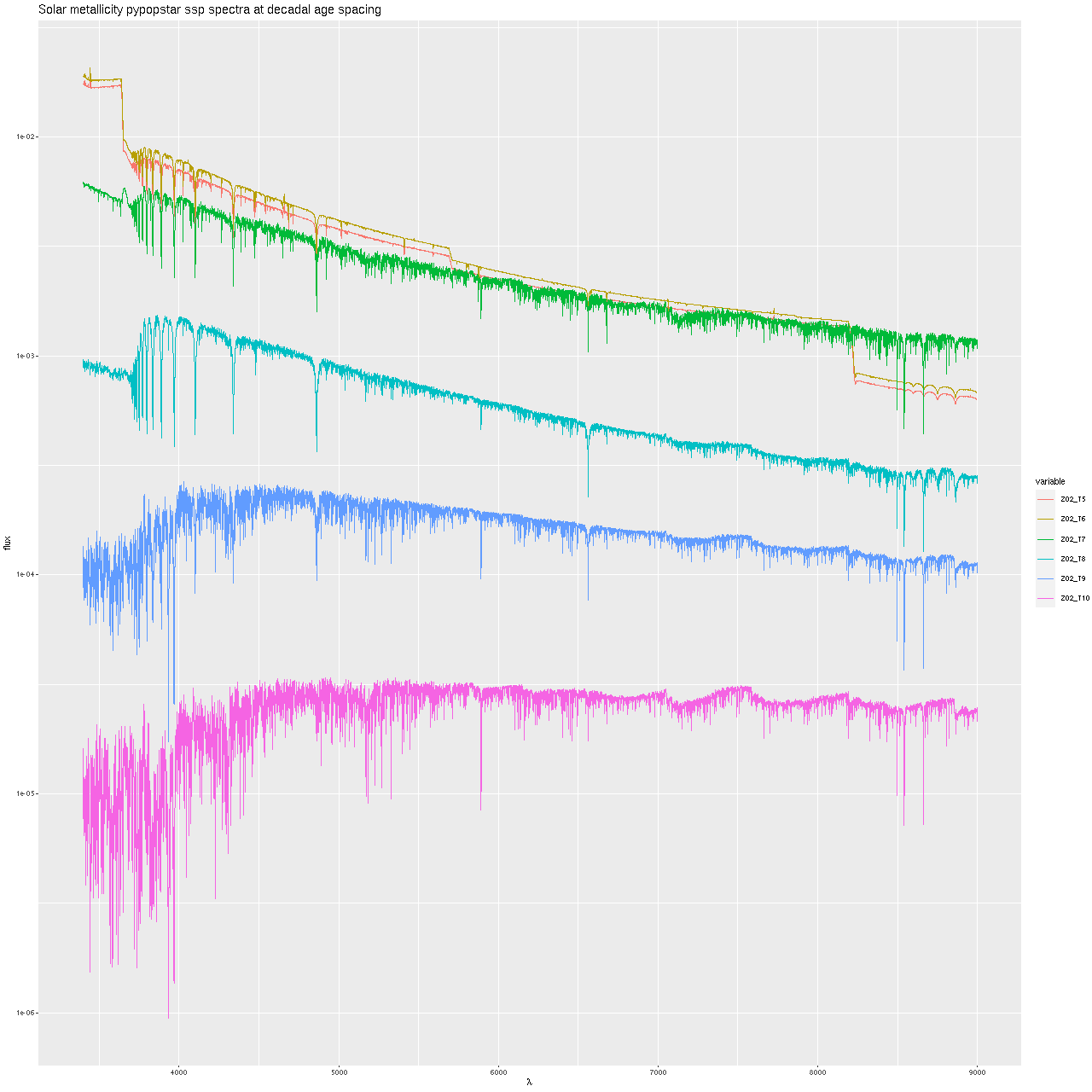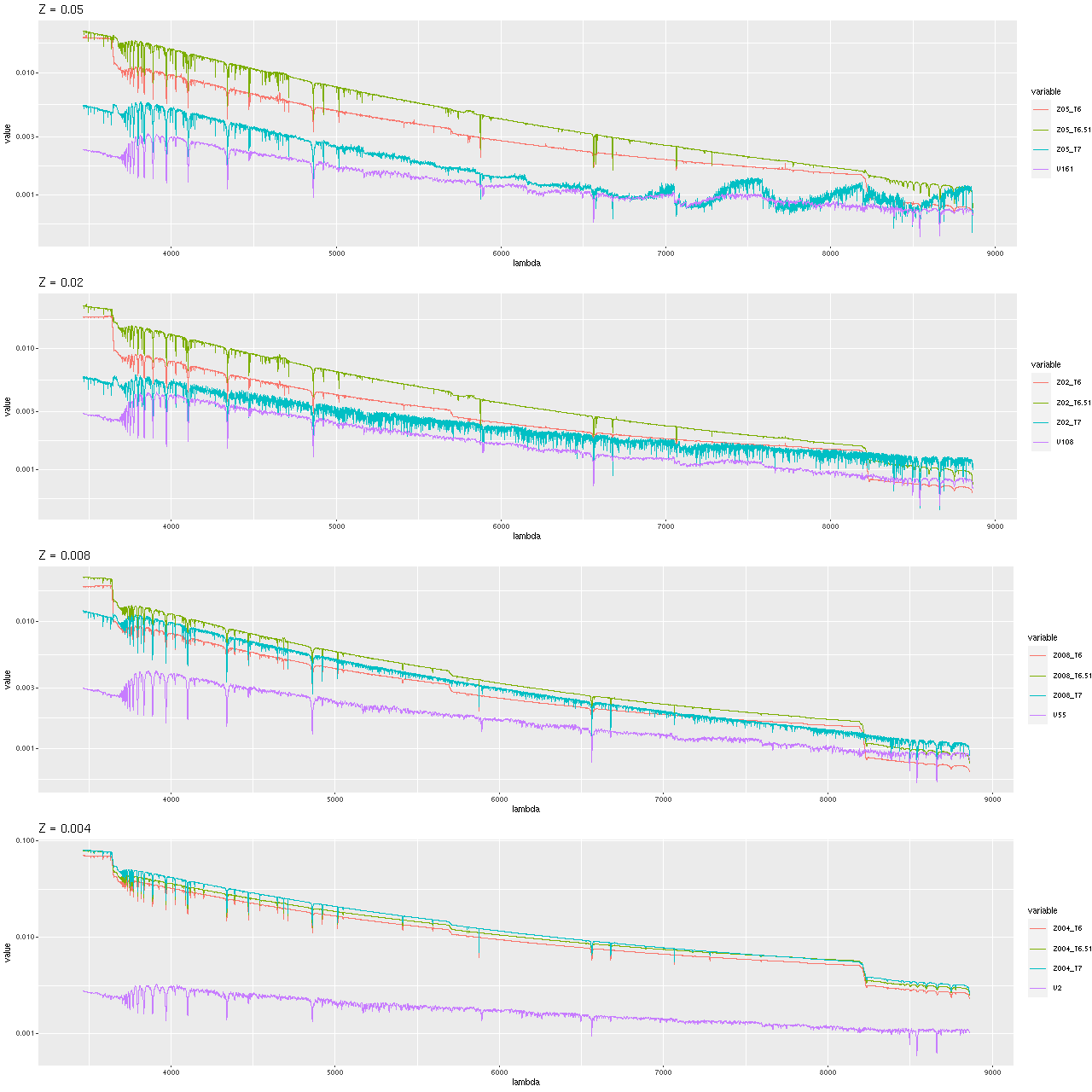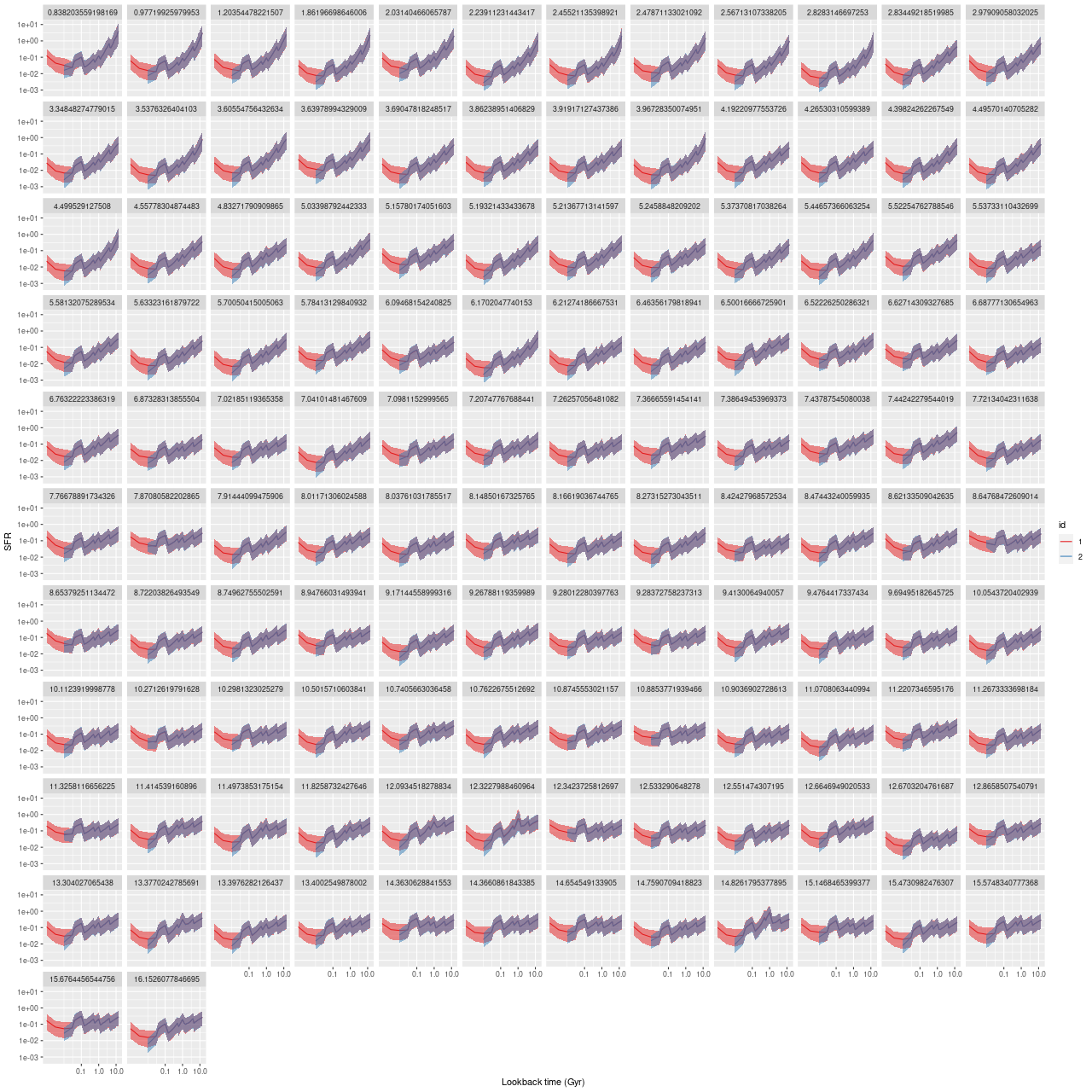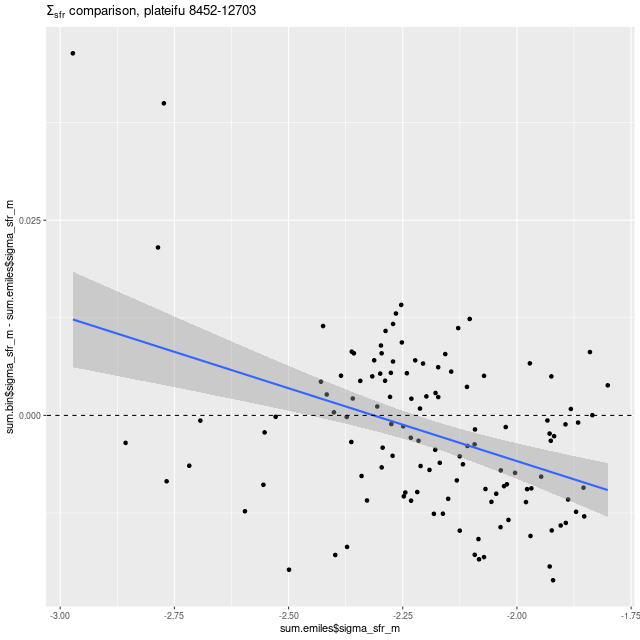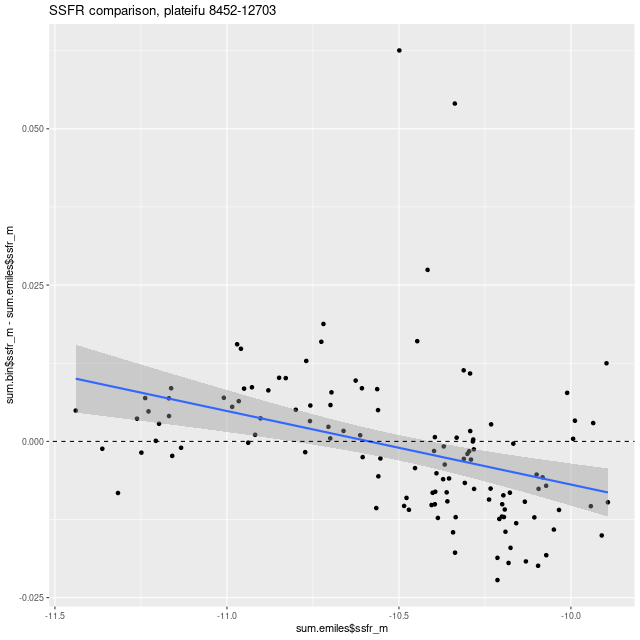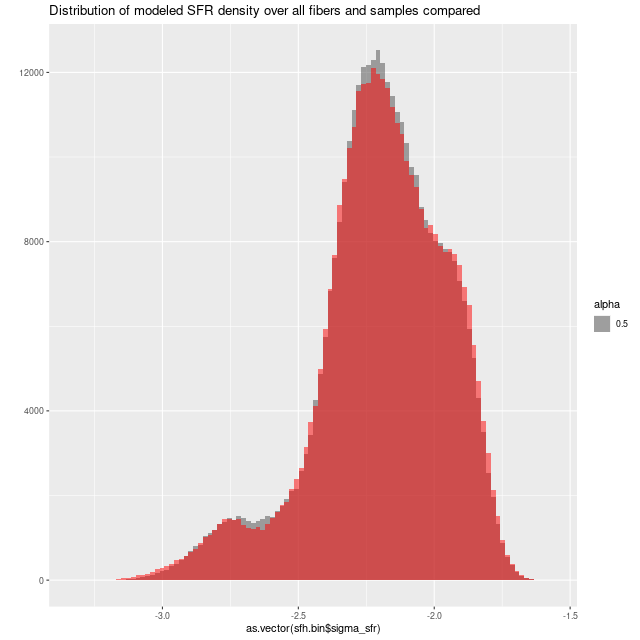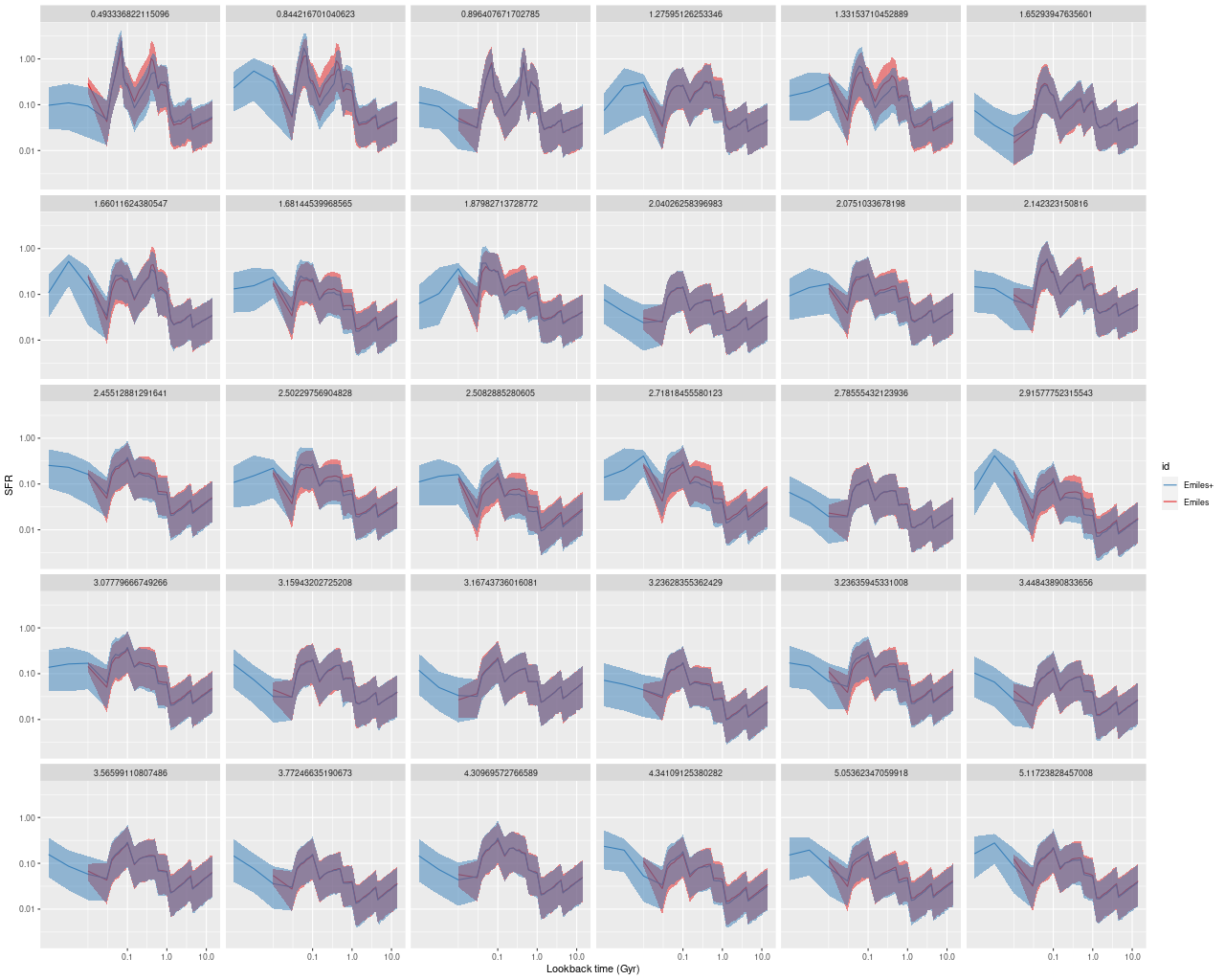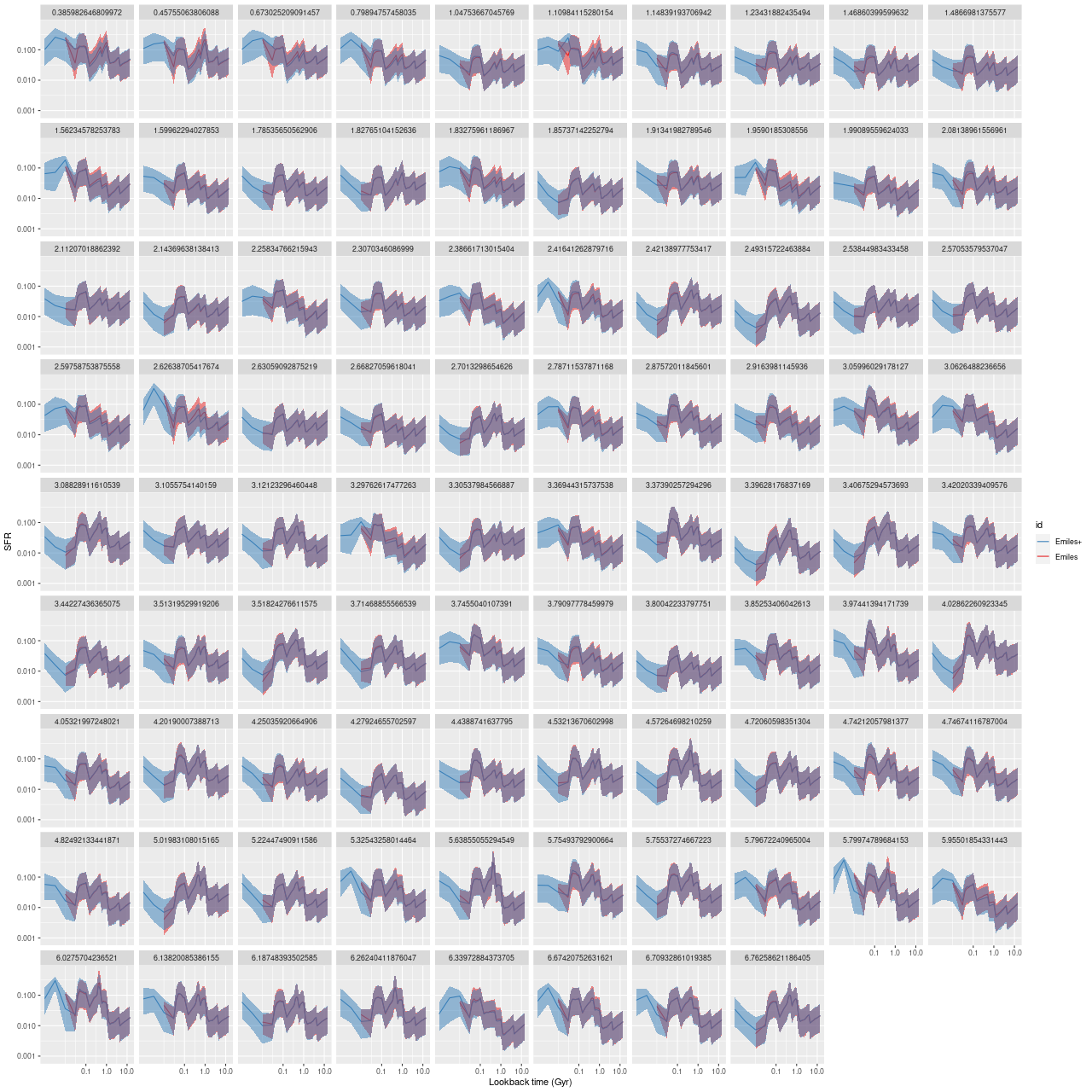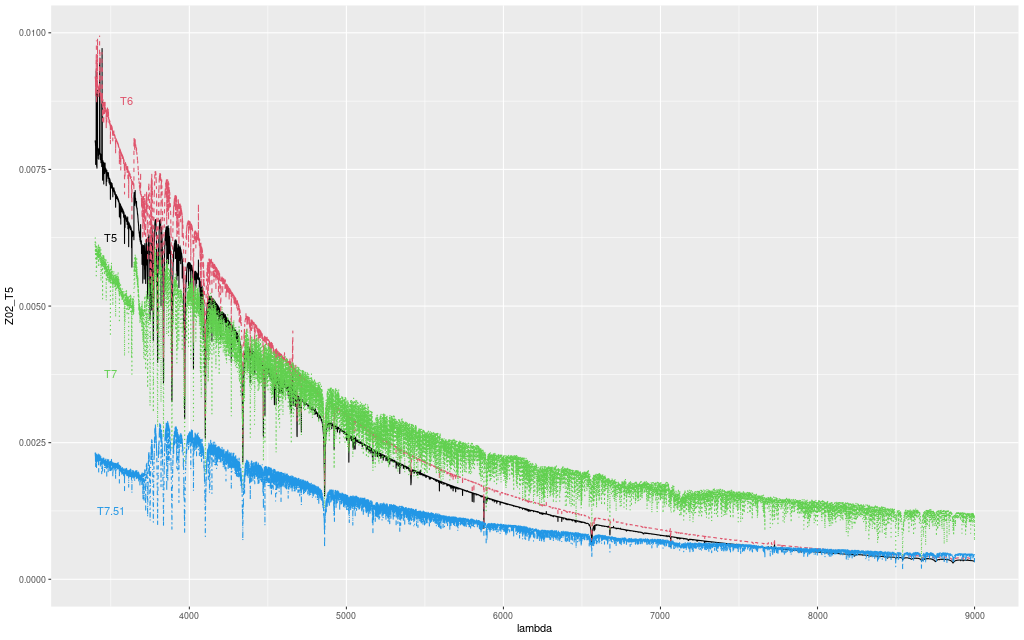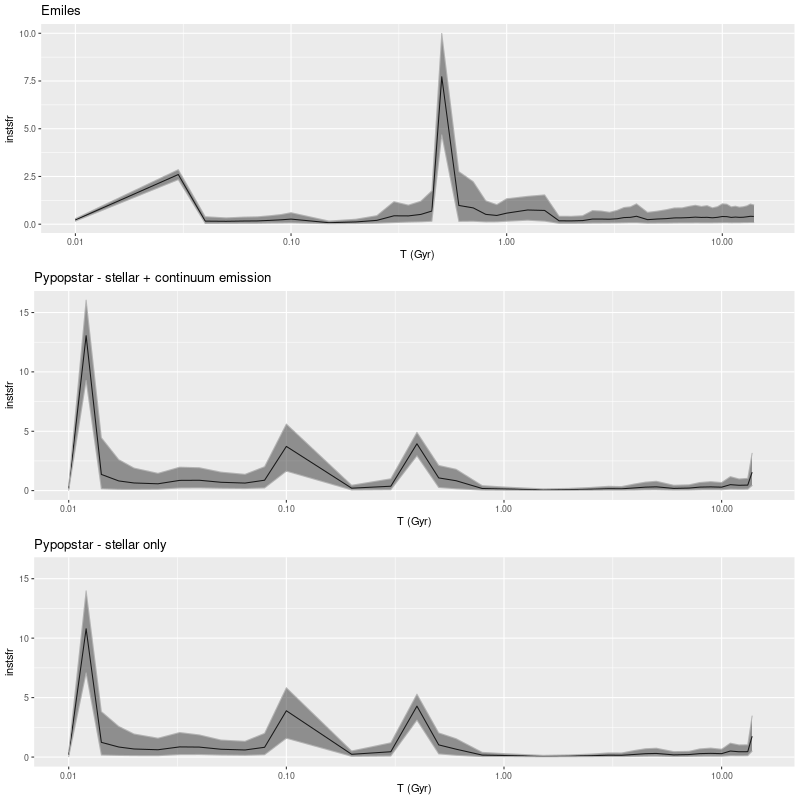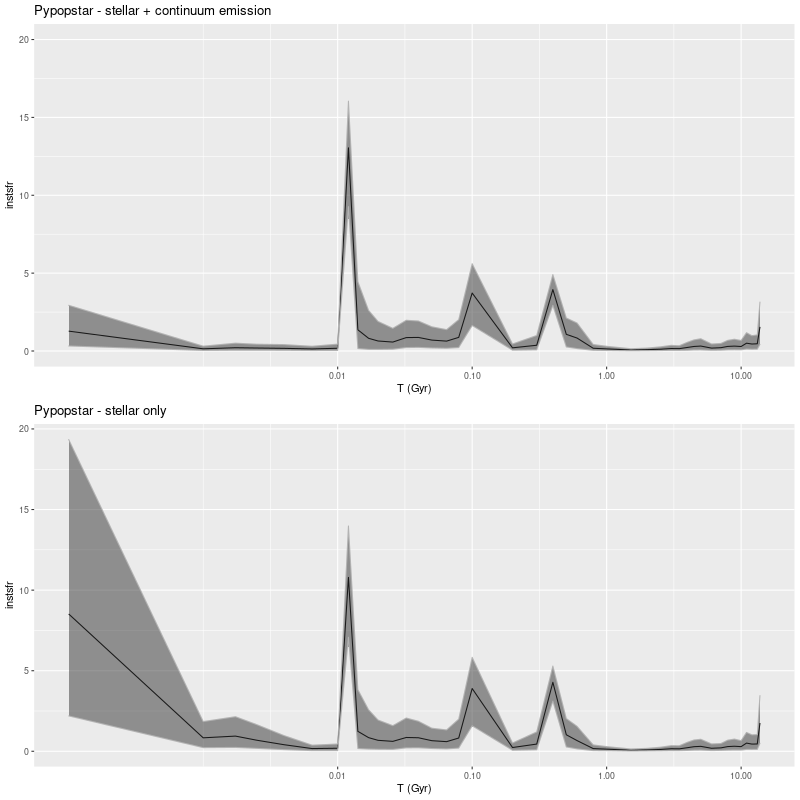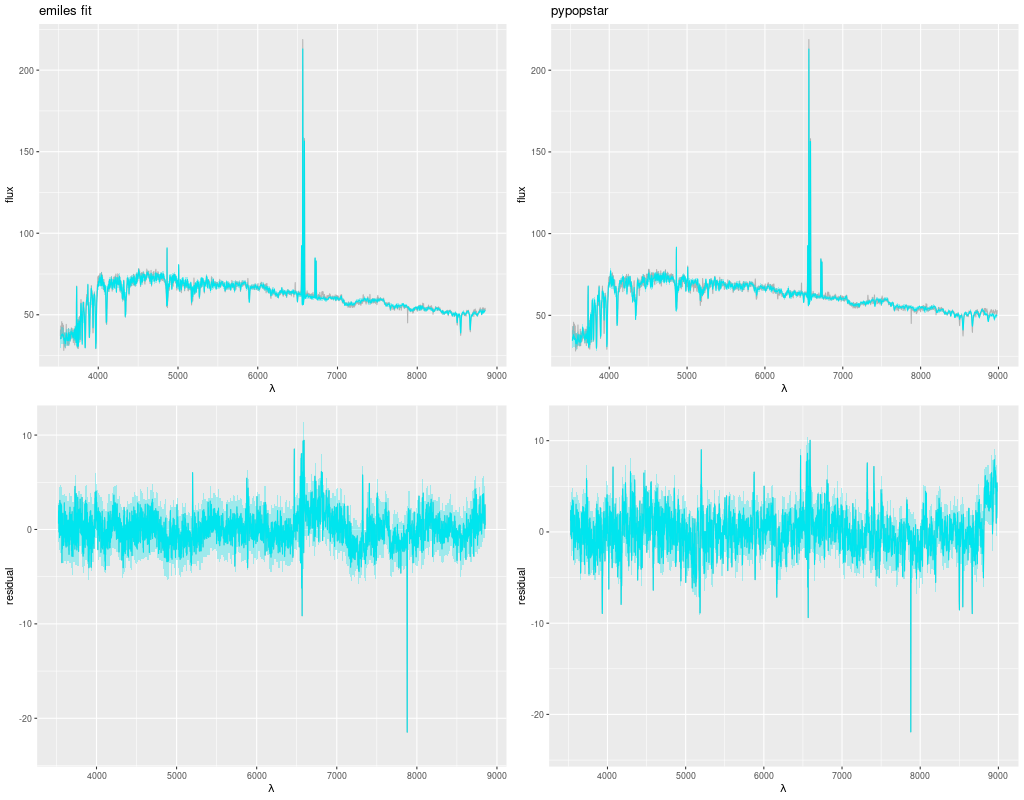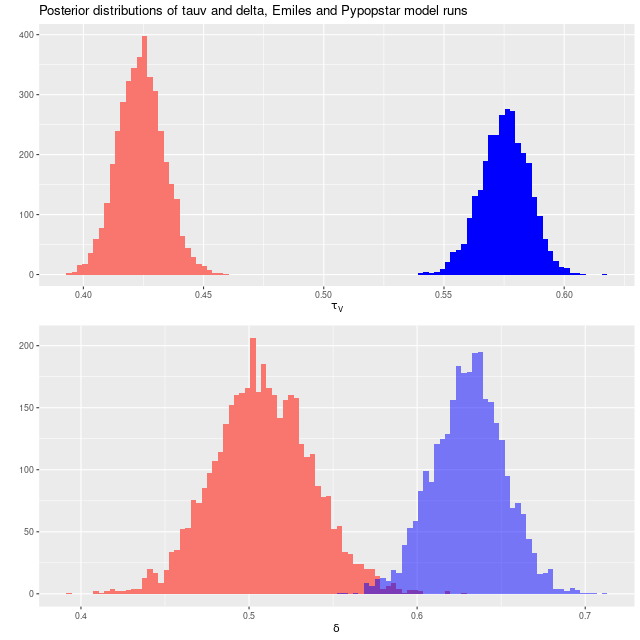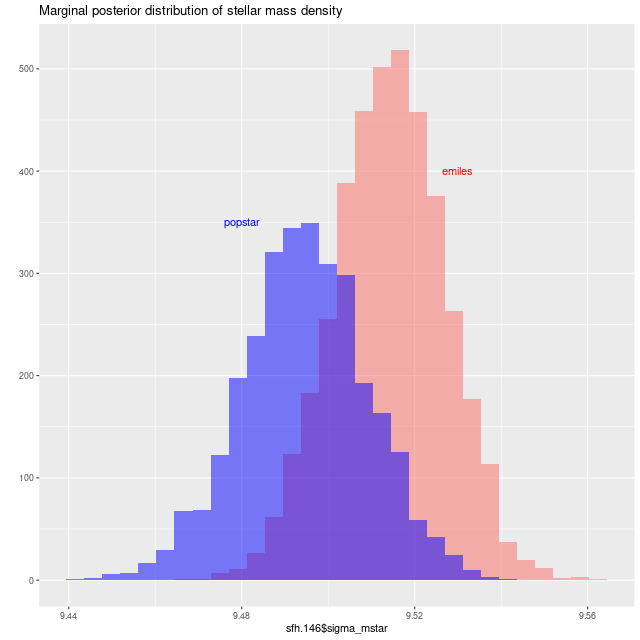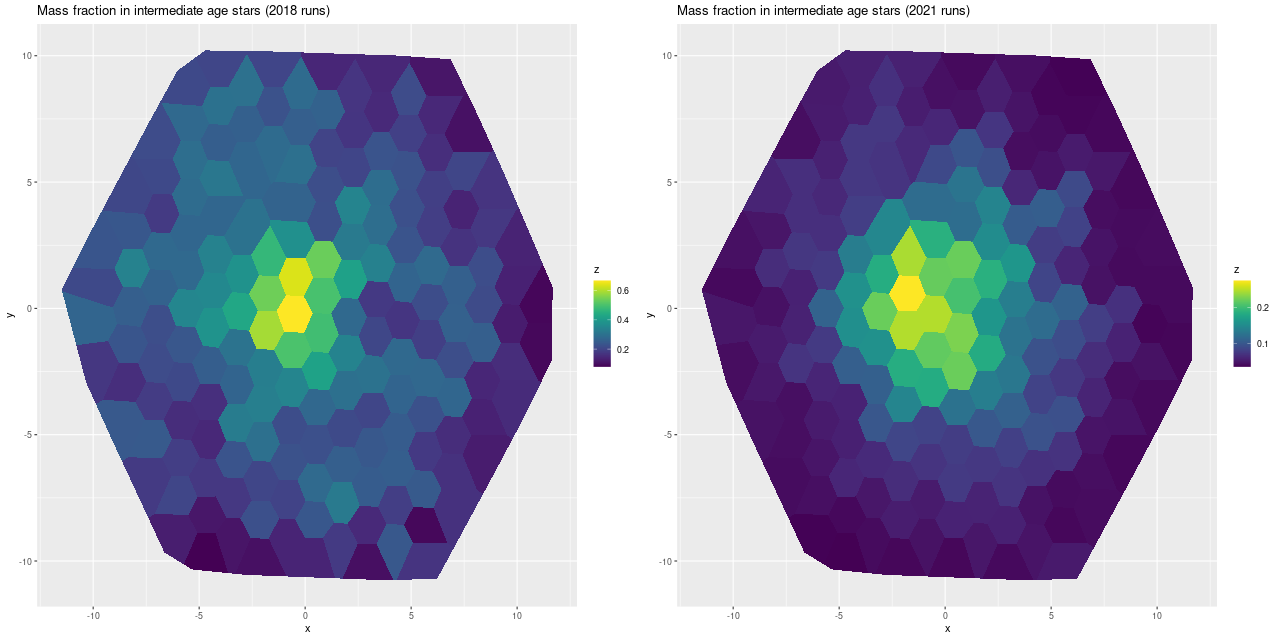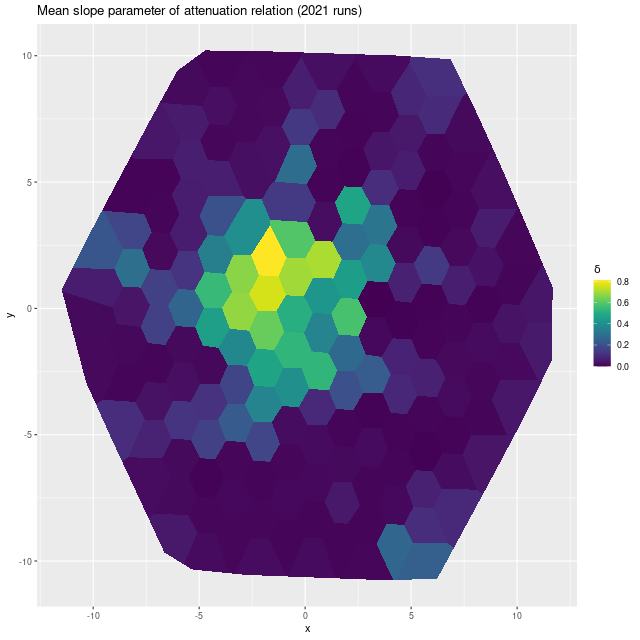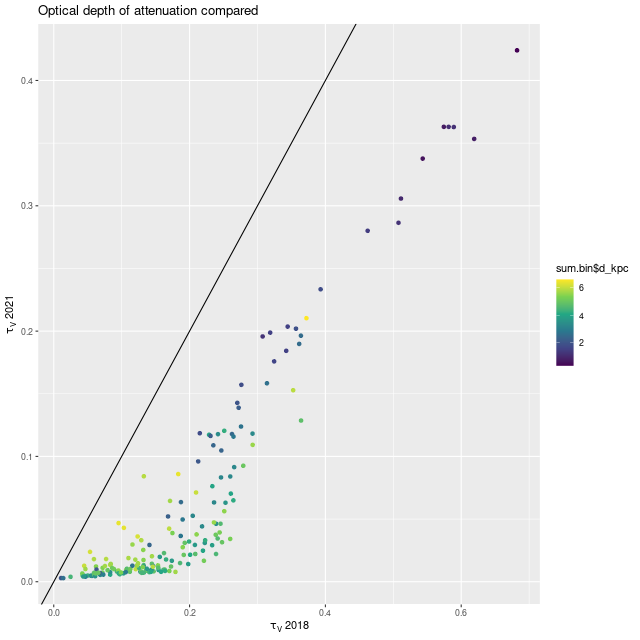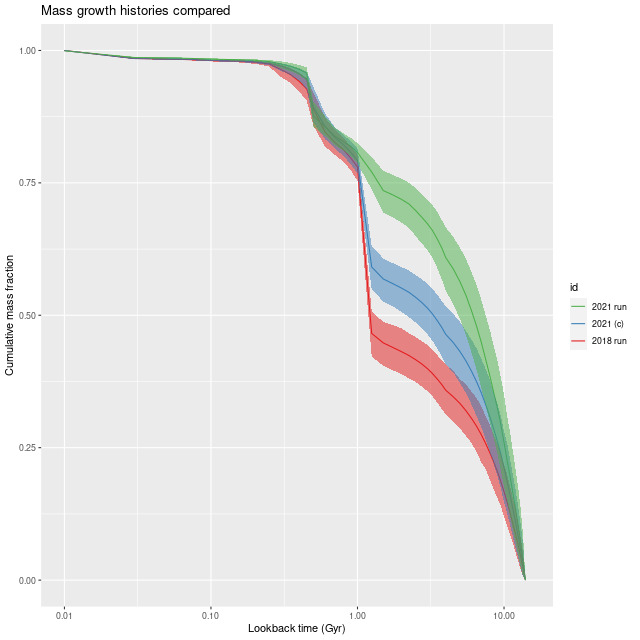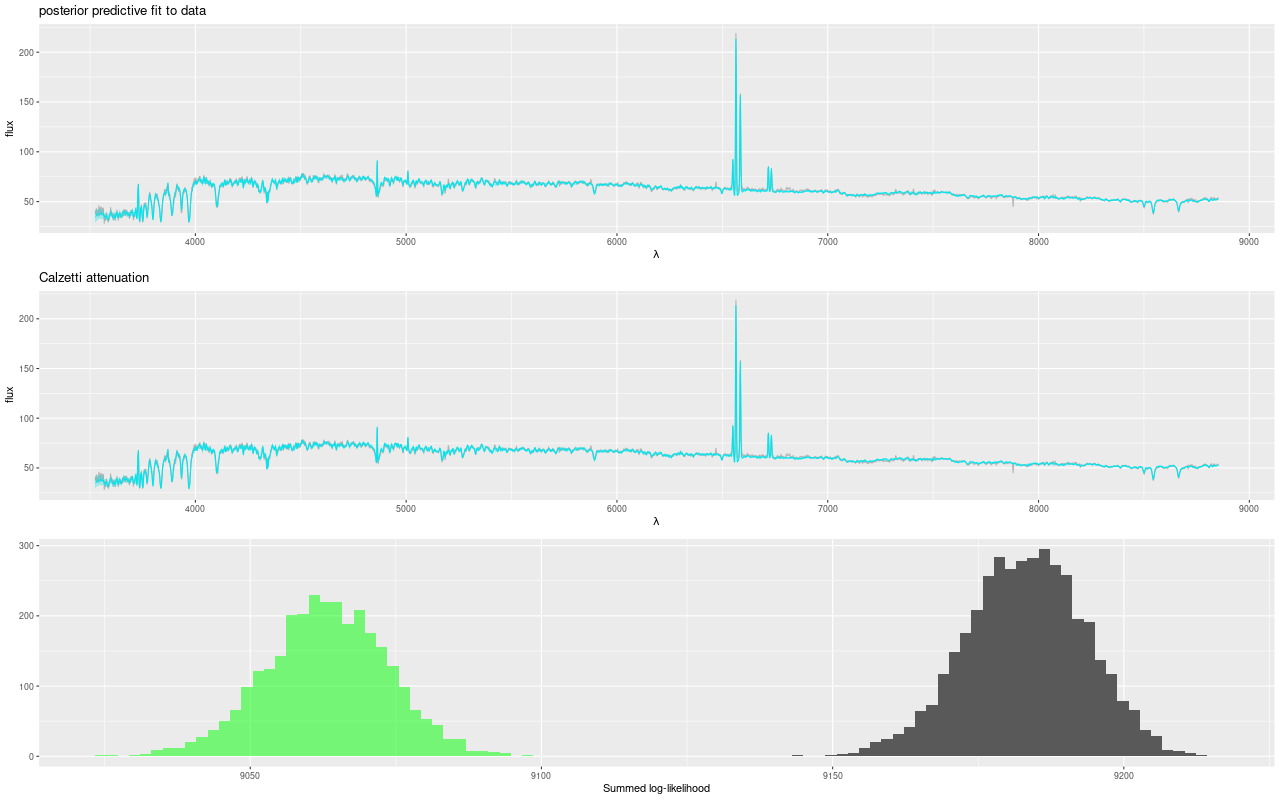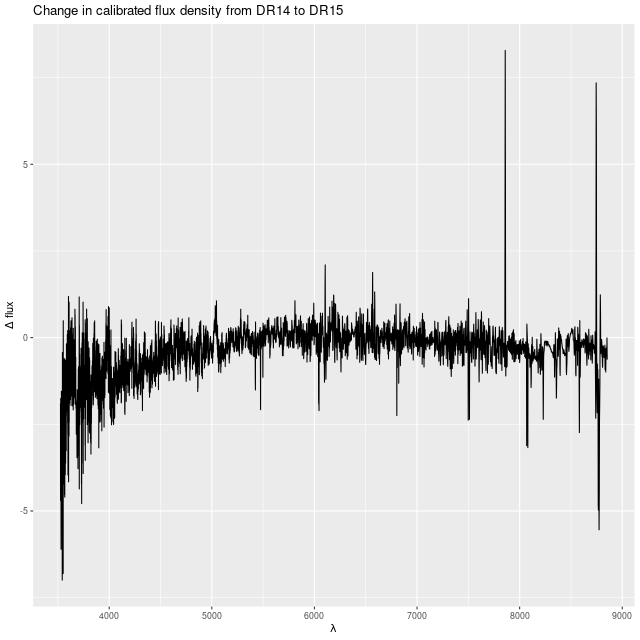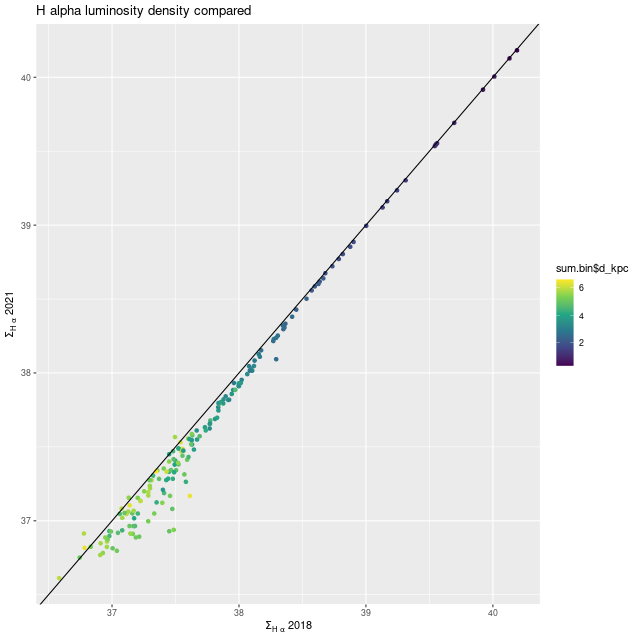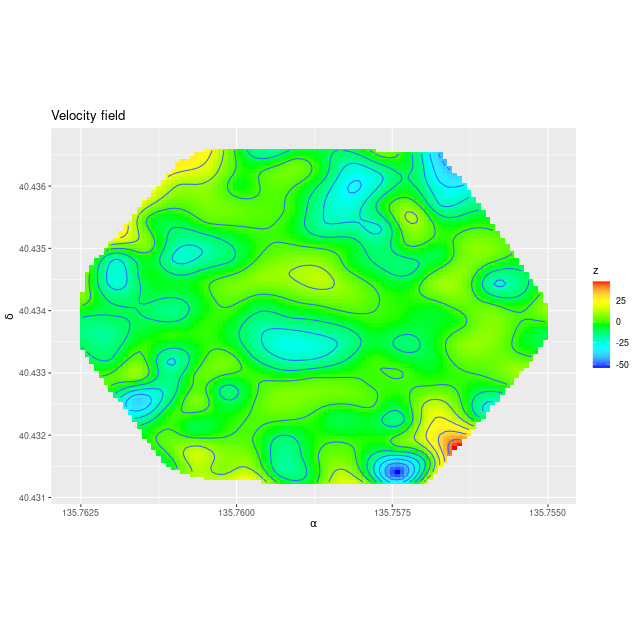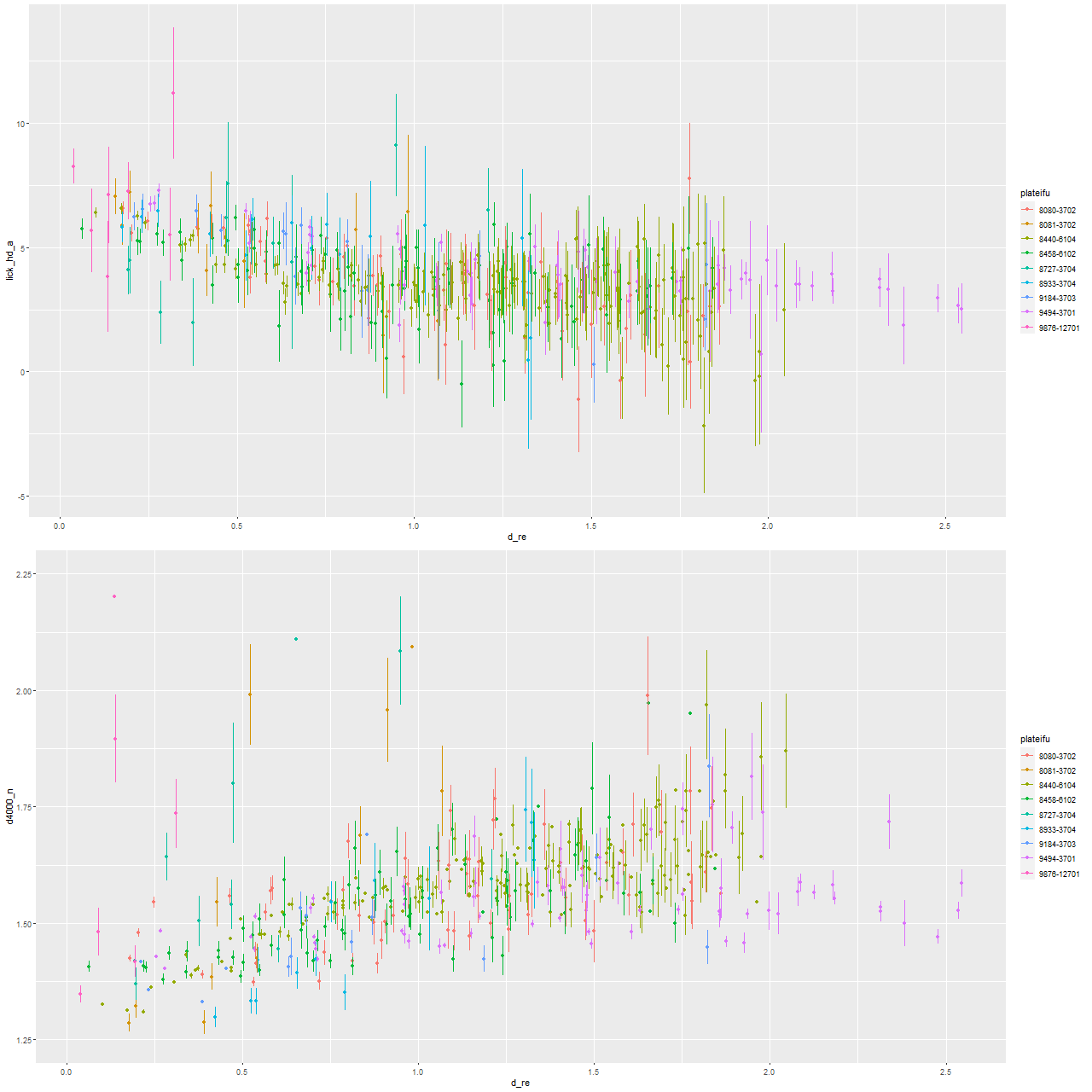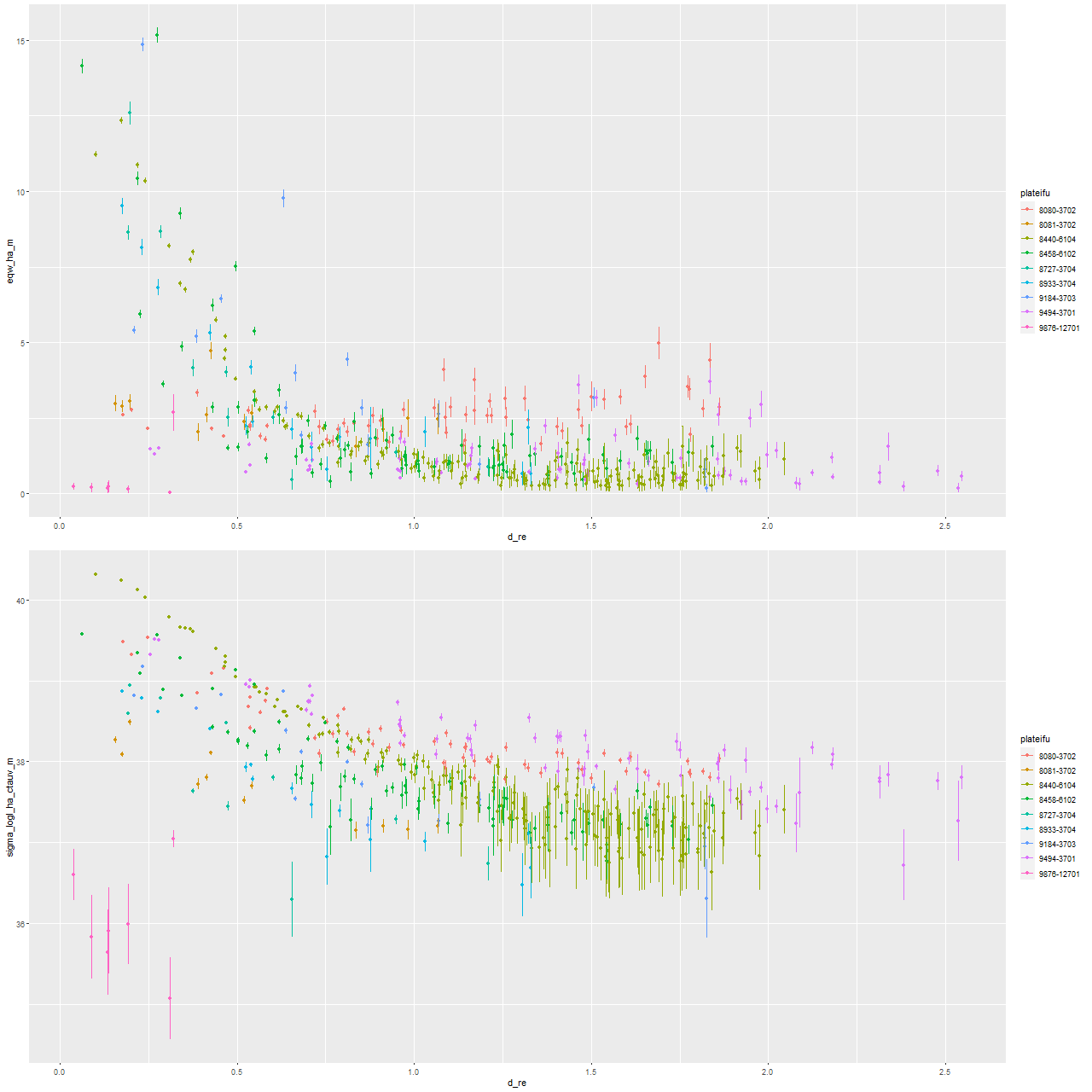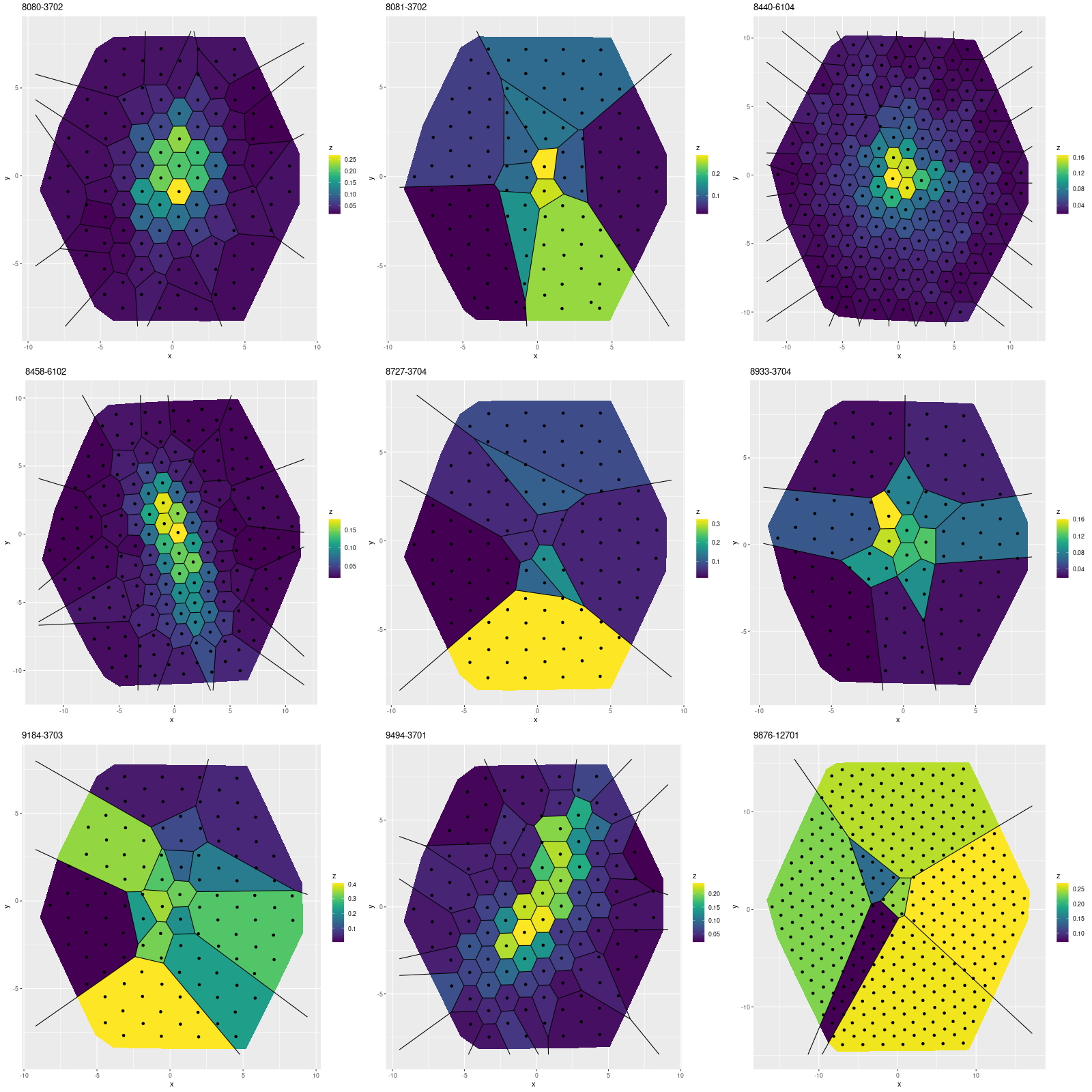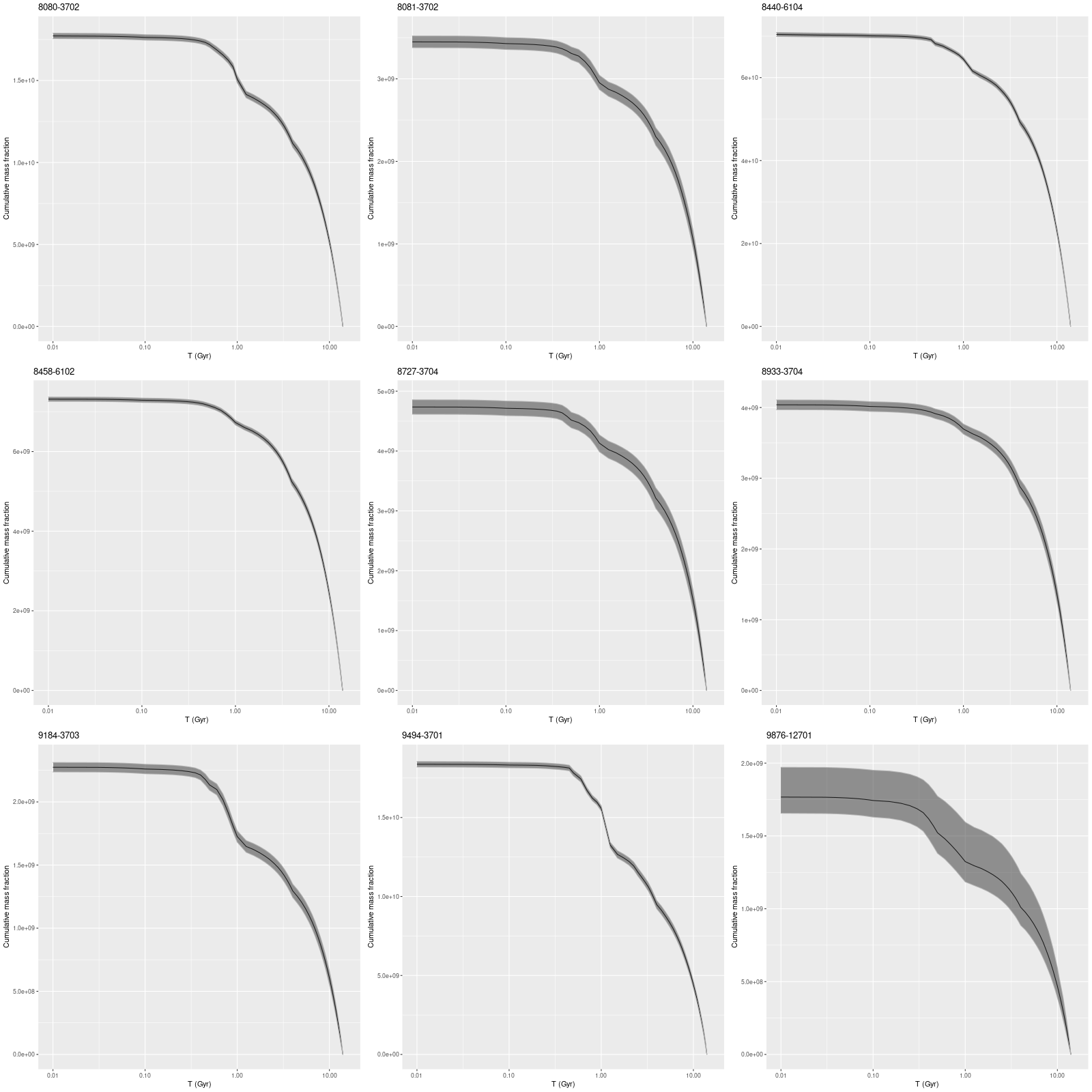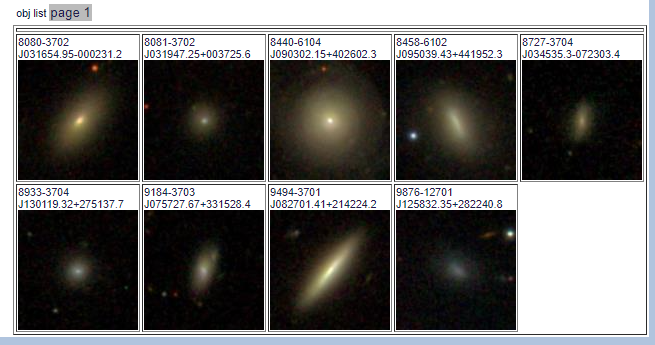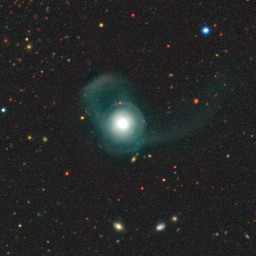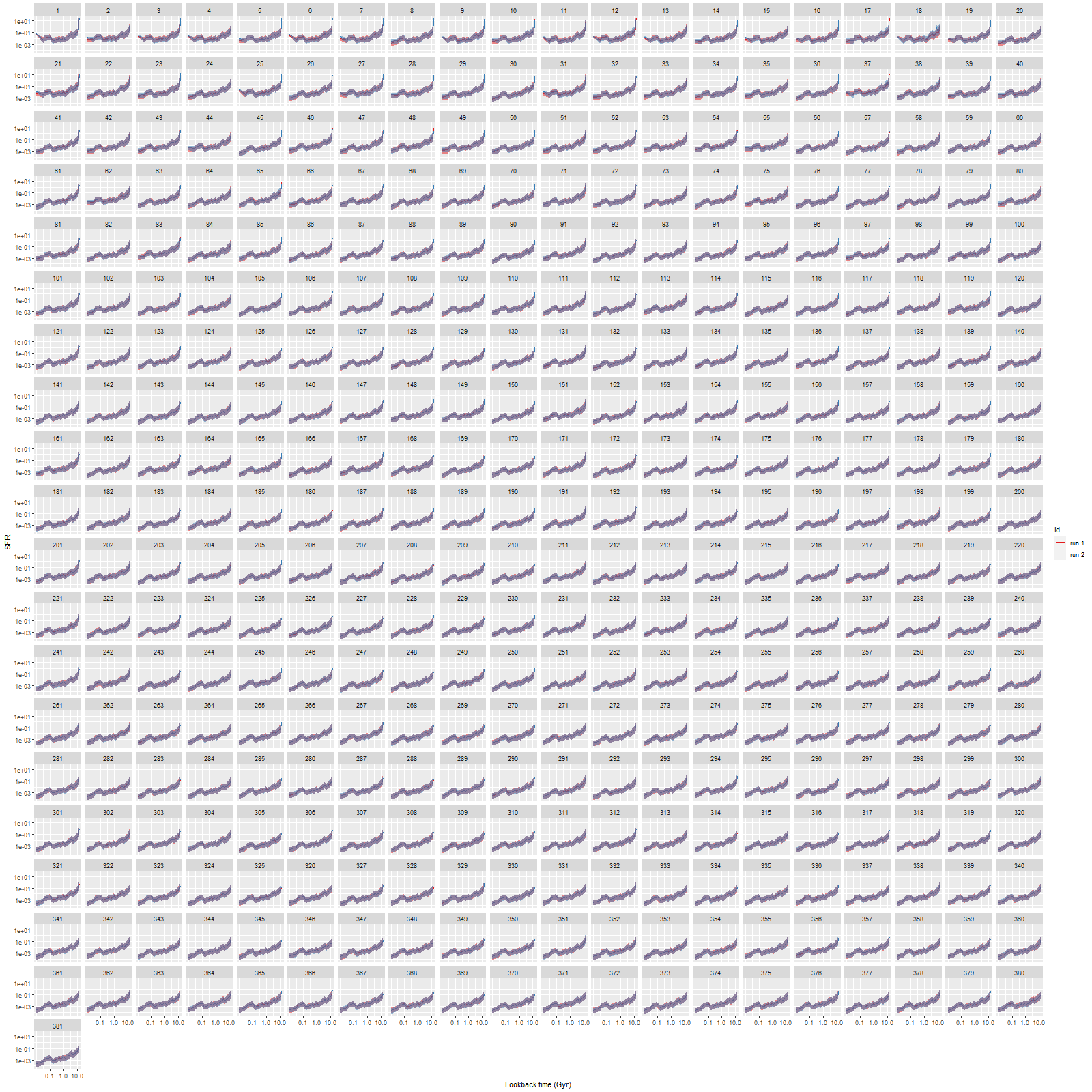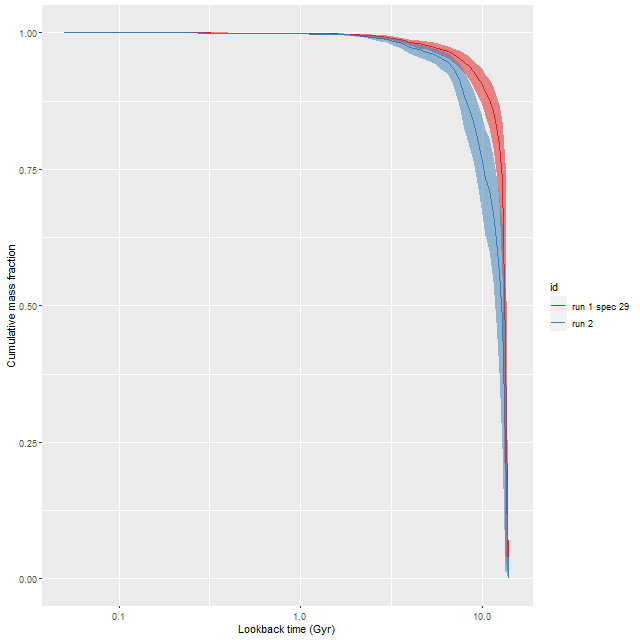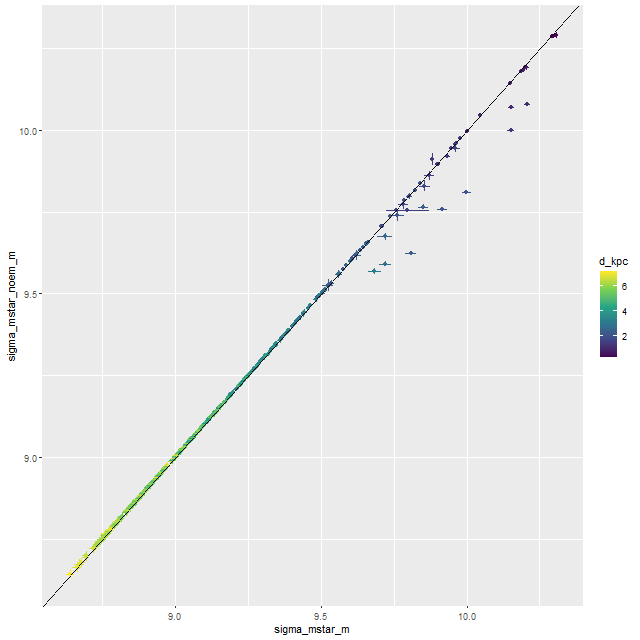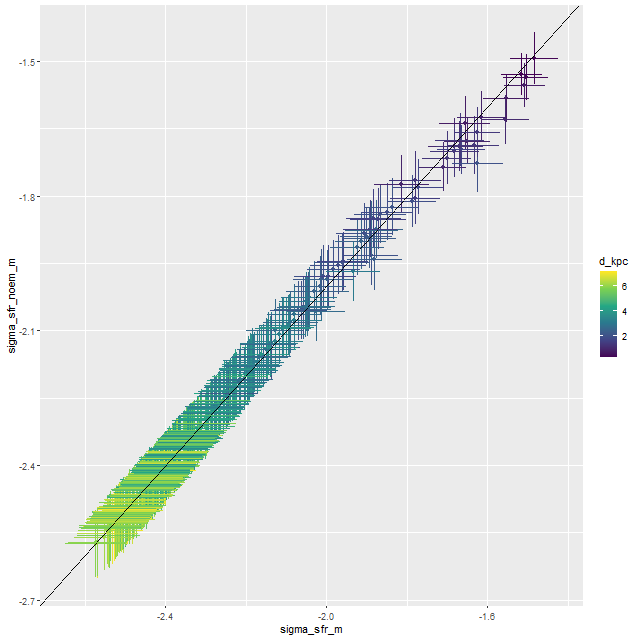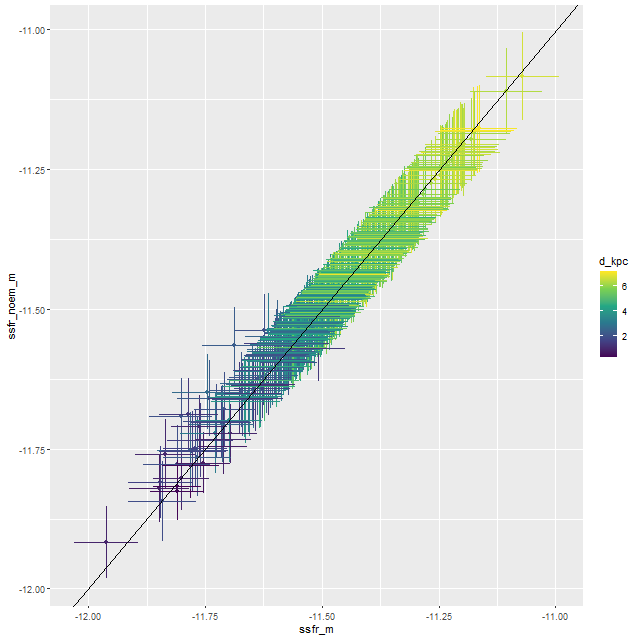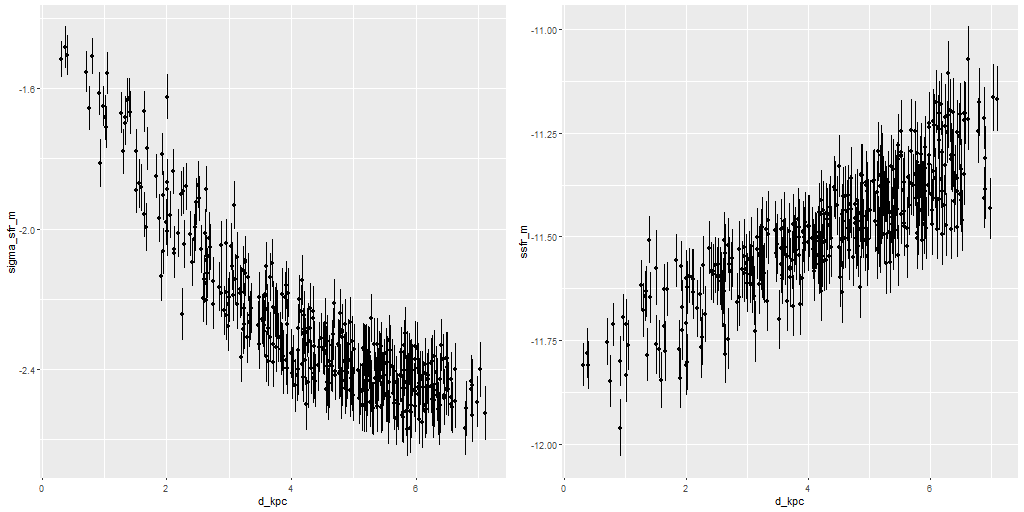While browsing through the ADS listing of papers that cite Schawinski’s paper that I’ve been discussing for a while I came across this one by Haines et al. with the full title “Testing the modern merger hypothesis via the assembly of massive blue elliptical galaxies in the local Universe”. Besides being on the same theme of searching for post-starburst or “transitional” galaxies in the local universe that I’ve been pursuing for some time the paper was interesting because it made use of IFU based spectroscopic data that predates MaNGA. As it happens 4 of the 12 galaxies have observations in the final MaNGA release, providing an excellent opportunity to compare results from completely independent data sets.
The “modern merger hypothesis” that the authors tested relates to a topic I’ve discussed before, which is that N-body simulations show that strong, centrally concentrated starbursts are a possible outcome of major gas rich galaxy mergers around the time of coalescence. If some feedback process (an AGN or supernovae) rapidly quenches star formation there will ensue a period of time when the galaxy will be recognizable as post-starburst.
In a series of long and rather difficult (and influential judging by the number of citations) Hopkins and collaborators (2006, 2008a, 2008b) have made a case that major gas rich mergers with accompanying starbursts are in fact the major pathway to the formation of modern elliptical galaxies. They claim that their merger hypothesis accounts for a variety of phenomena, including the growth and evolution of supermassive black holes and quasars.
The specific aspect of the merger hypothesis this study tried to address was the prevalence of strong centrally concentrated starbursts in a sample of ellipticals in the process of forming as evidenced by visible disturbances consistent with recent mergers. The main tool they used was a suite of simple star formation history models with exponentially decaying star formation rate with single (also exponentially decaying) bursts on top of varying ages and decay time scales. They used these to predict just two quantities: Balmer absorption line strength measured by the average of the Lick HδA and HγA indexes, and the 4000Å break strength index Dn4000. For reference here is a screen grab of their model trajectories:
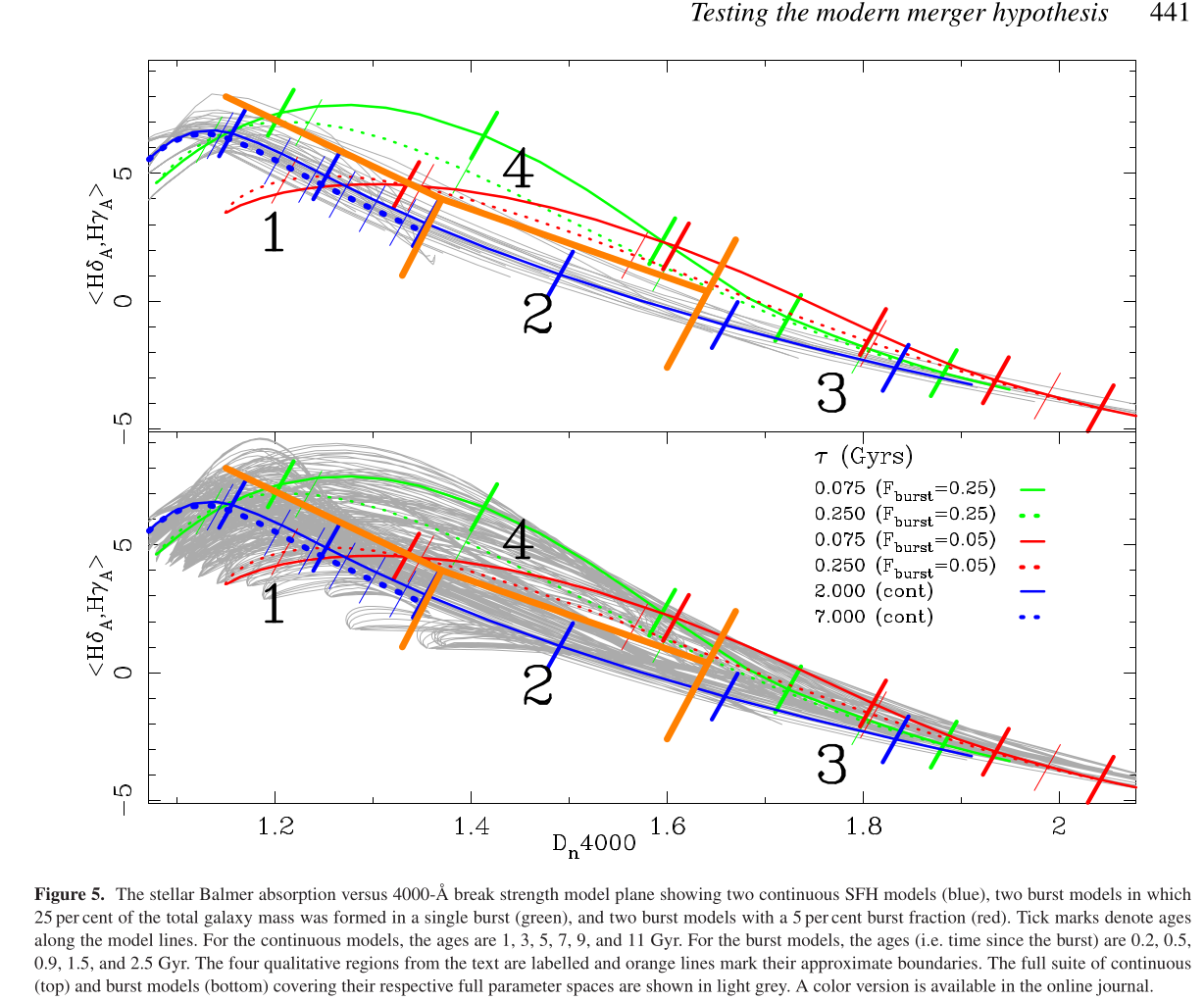
This is a pretty standard calculation variations of which have been performed for decades, and this graph looks much like others I have seen in the literature. A fairly basic problem with it though is that position in the Balmer – D4000 plane doesn’t uniquely constrain even the recent stellar evolution. In astronomers’ parlance there is a “degeneracy”1the term refers to a situation in which multiple combinations of some parameters of interest produce effectively equivalent values of some observable(s), or of course the converse. The best known example is the “age-metallicity degeneracy,” which refers to the fact that an old metal poor population looks like a younger metal rich one in several respects such as broad band colors. between burst strength (if any) and burst age. This is a well known problem with the Balmer line strength index that was already recognized by Worthey and Ottaviani (1997), who developed these indexes. Adding a second index in the form of the 4000Å break strength doesn’t break the degeneracy: there are regions of the plane where bursting and non-bursting populations overlap, as can be seen clearly in the graphic above. This is actually a problem for any attempt to identify post-starburst galaxies. After correcting for emission most ordinary starforming galaxies have strong Balmer absorption lines, so using that index alone will certainly produce many false positives. On the other hand selection criteria like those used by Goto and many others before and after — selecting for both strong Balmer absorption and weak emission — will capture only a small interval in post-starburst galaxies’ life cycles.
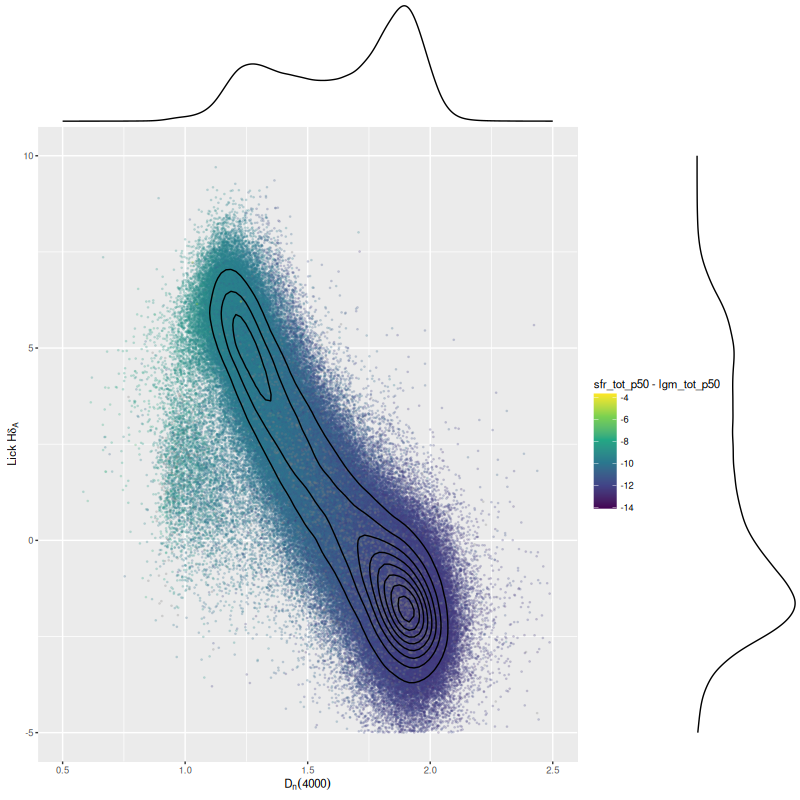
Let’s get to results. Some basic details of the sample are in the table below. Morphological classifications are from McIntosh et al. (2014) as given in this paper. The abbreviations are SPM: spherical post merger; pE: peculiar Elliptical. The two marked pE/SPM didn’t have a strong consensus among several professional classifiers. I list them in order of my own visual impression of degree of disturbance. I also list redshifts taken from the MaNGA catalog and Petrosian colors.
| NED name | NYU ID | mangaid | plateifu | Morph | z | u-r | g-i |
| NGC 3921 | 541044 | 1-617445 | 10510-6103 | SPM | 0.019 | 1.97 | 0.86 |
| MRK 385 | 719486 | 1-604970 | 8940-6102 | pE/SPM | 0.028 | 1.43 | 0.63 |
| MRK 366 | 100917 | 1-603309 | 7993-1902 | pE/SPM | 0.027 | 1.59 | 0.79 |
| NGC 1149 | 22318 | 1-37155 | 8154-6103 | pE | 0.029 | 2.29 | 1.11 |
The main prediction of the merger with accompanying centrally concentrated starburst hypothesis the paper tests is that the Balmer absorption index should be large and have a negative gradient with radius while the 4000Å break strength should be low with a positive gradient. The authors concluded that only one member of their sample — nyu541044 — clearly falls in the post-starburst region (marked as region 4 in the graph above) of the <Hδ, Hγ> – Dn4000 plane. The two pE/PM galaxies, both of which are in my sample, lie in the starforming region 1. They inferred from this that these galaxies are undergoing at most a weak burst. I’m going to mildly disagree with that conclusion.

I have calculated the pseudo Lick index HδA and Dn4000 as part of my analysis “pipeline” since I started this hobby. I actually make these measurements in the initial maximum likelihood fitting step since they don’t depend on modeling except for small (usually) emission corrections. I don’t calculate an Hγ index, but its theoretical behavior is similar to Hδ. I’m trying here just to verify the approximate magnitude and radial trends of the chosen indexes. The two IFUs used in the Haines study had larger spatial coverage than these MaNGA observations (but much smaller wavelength coverage, which will become important). Instead of their strategy of binning in annuli I used my usual Voronoi binning strategy with a minimum target S/N. There were some oddities in the NYU estimates of effective radii so I chose to use distances from the IFU center in kpc for these plots. The distances assigned to the multiply binned spectra are the same as Cappelari’s published code produces; for single fiber spectra it’s just the position of the fiber center.
My measurements agree reasonably well with those of Haines et al. All three of the most disturbed galaxies have central Hδ indexes > 5Å with NGC 3921 (plateifu 10510-6103, nyu541044) having a larger central value and steeper gradient in the inner few kpc than the two pE/SPM galaxies. The fourth galaxy shows no obvious trend in either index with radius2The next several plots show trend lines for each galaxy computed by fitting simple loess curves to the data using the default parameters in ggplot2. These, and especially the confidence bands included in the plots, should not be taken seriously!. The central values where the S/N is highest are in good agreement.

Lets turn to the results of star formation history models, which I ran on all 4 data sets. First, here are 100Myr averaged star formation rate density and specific star formation rate versus distance:

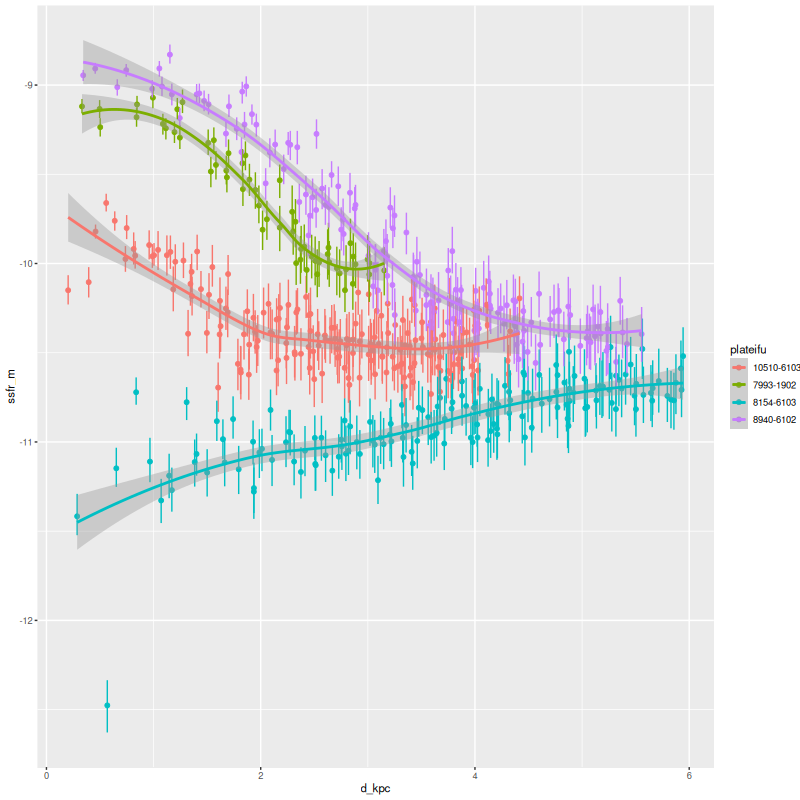
Three of these galaxies are clearly experiencing centrally concentrated episodes of star formation, and two are at or near starburst levels in specific star formation rate near their centers. As seen below two of these straddle my estimate of the “spatially resolved star forming main sequence” while the one presumed post-starburst galaxy reaches it in the central region.
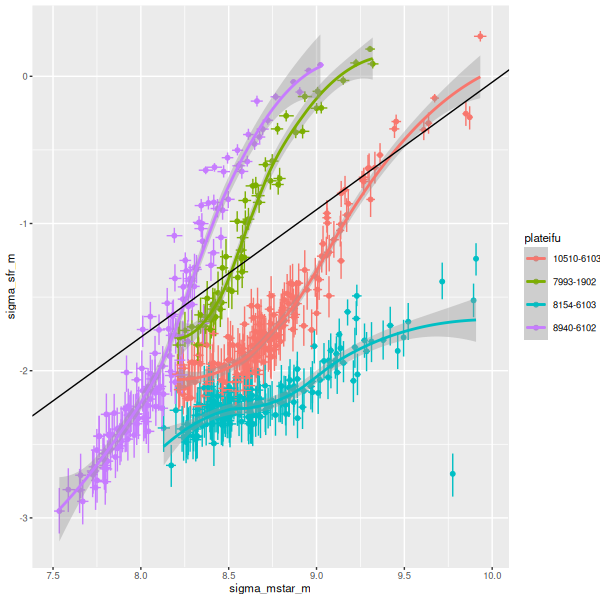
As I’ve shown several times before there’s a reasonably tight linear relationship between modeled star formation rate and Hα luminosity density. The plot shows Hα luminosity density corrected for modeled stellar redenning, which certainly underestimates attenuation in emission regions. The modeled star formation rates are consistently above the Kennicut relation shown as the straight line as I’ve seen in every sample I’ve looked at.
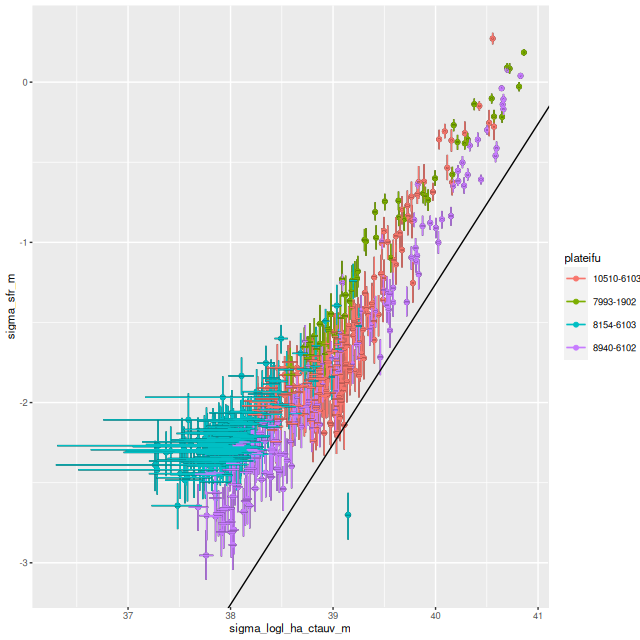
Finally, lets take a look at detailed star formation histories. Instead of my usual practice of plotting them all in a grid here I just display 2 binned star formation histories. One comprises the innermost 7 bins, which since the fibers are arranged in a hexagonal grid should form a regular hexagon around the IFU center. These range in “radius” from about 0.75 to 1.1 kpc in these four galaxies. The second is for an “annulus” in approximately the outer kpc of each IFU. The extent of the IFU footprints ranges from 3.1 to 5.9 kpc. I calculate these by summing the contributions in each SFH model contributing to the bins, not by running new models for binned spectra. Since the dithered fiber positions overlaps this overestimates the total mass in each bin, but I care about the shape and timing of events rather than the absolute values of star formation rate estimates.
The next 4 plots display the results. Lookback time is logarithmically scaled with the same range and ticks for each SFH. Vertical scales are linear and differ for each graph. The graphs are in the same order as the basic information table above. As I’ve written before these models “want” to have smoothly varying mass per time bin which has the unfortunate effect of producing jumps in the apparent SFR when the bin widths change. In the BaSTI isochrone based SSP models these occur at 100 Myr, 1 Gyr, and 4 Gyr and can sometimes be quite prominent.
With caveats out of the way the one clear post-starburst in the sample had (per the model) a powerful and short starburst at ≈300 Myr lookback time, with a small amount continuing to the present (this can’t be seen at the scale of the graph, but ongoing star formation is ~1 M☉/yr). The total mass contribution from the burst and subsequent star formation is around 15%.
The two apparent ongoing starbursts have later bursts of star formation that are slightly weaker in terms of total mass contribution and peak star formation rate, but still quite significant. All three of the starburst/post-starburst galaxies appear to have had two major waves of late time (last ~2 Gyr or less) star formation. As I’ve written before in merger simulations the progenitors usually complete a few orbits before coalescence, with some enhanced star formation around each perigalactic passage. I hesitate to take these models that literally.
Turning finally to the last and least disturbed galaxy, NGC 1149, despite the bursty appearance of the SFH there’s no evidence for a major starburst in the cosmologically recent past. Whether an older starburst can be detected in this kind of modeling approach needs investigating.
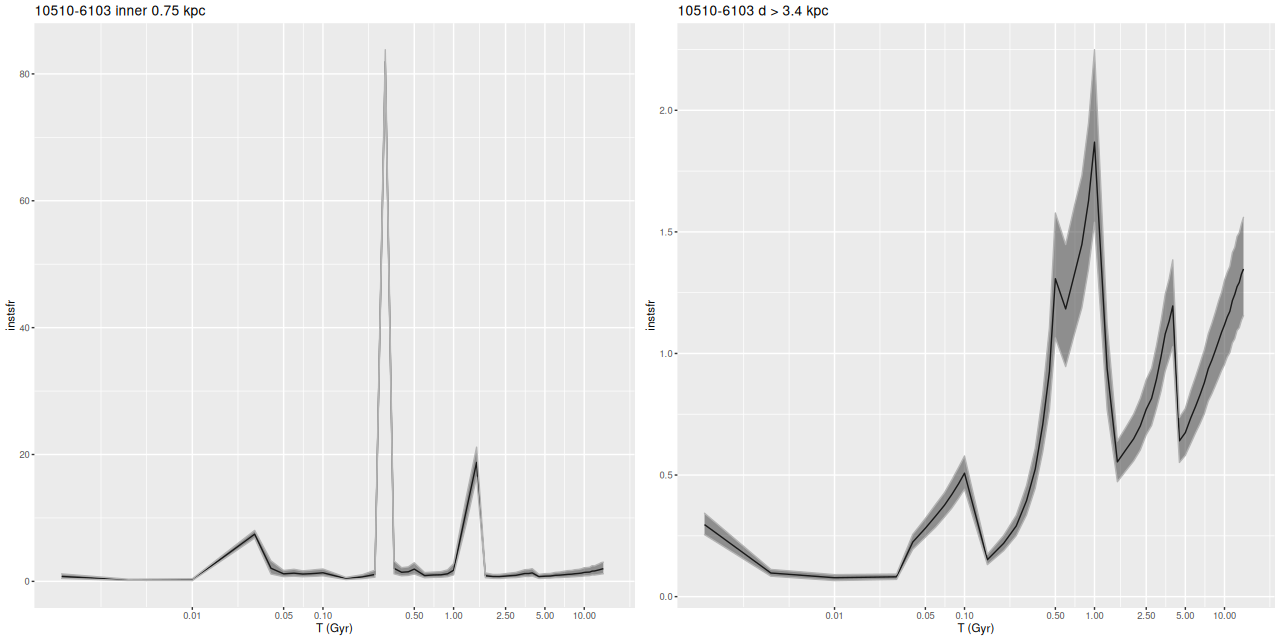
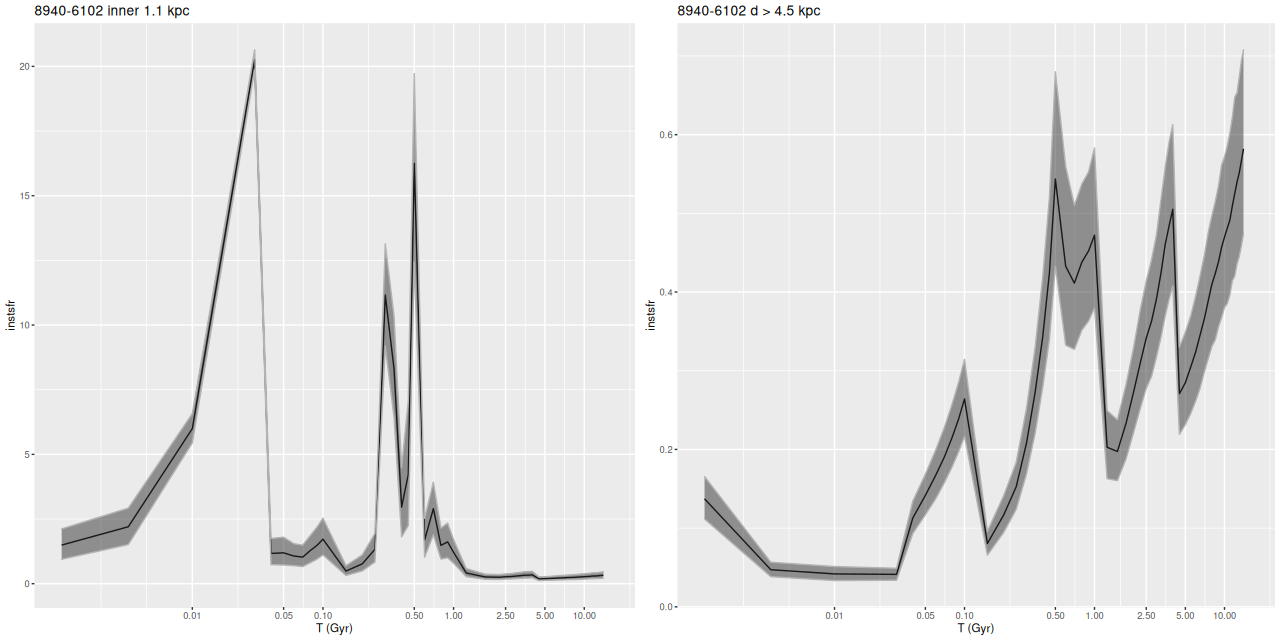
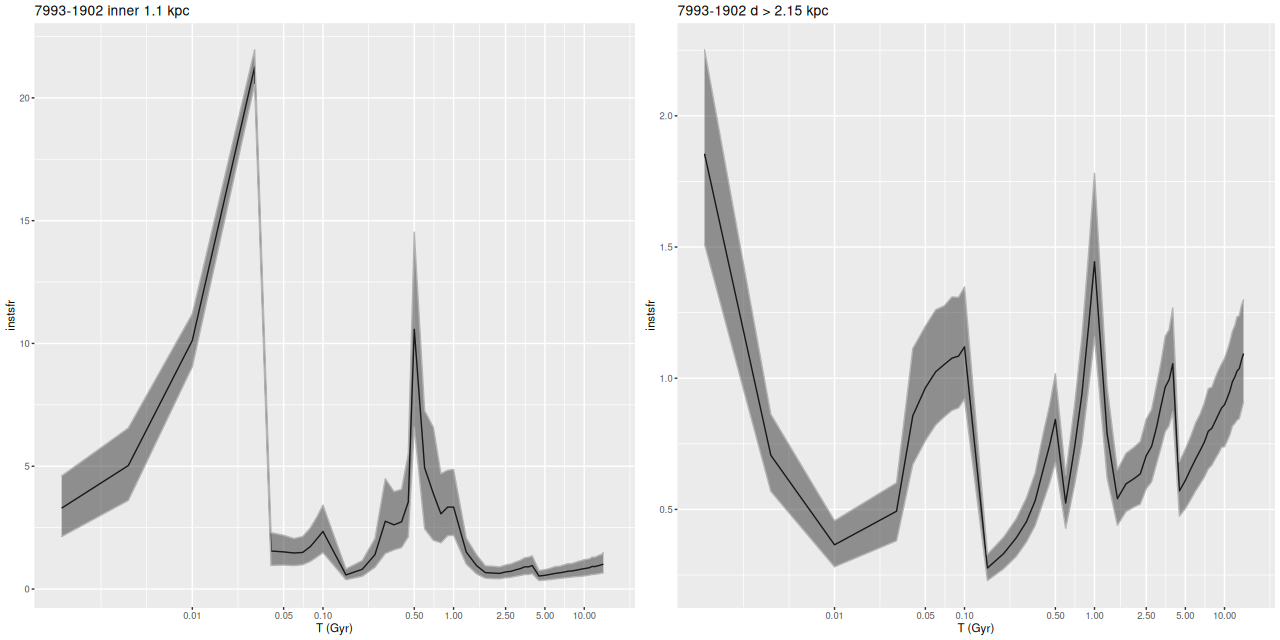
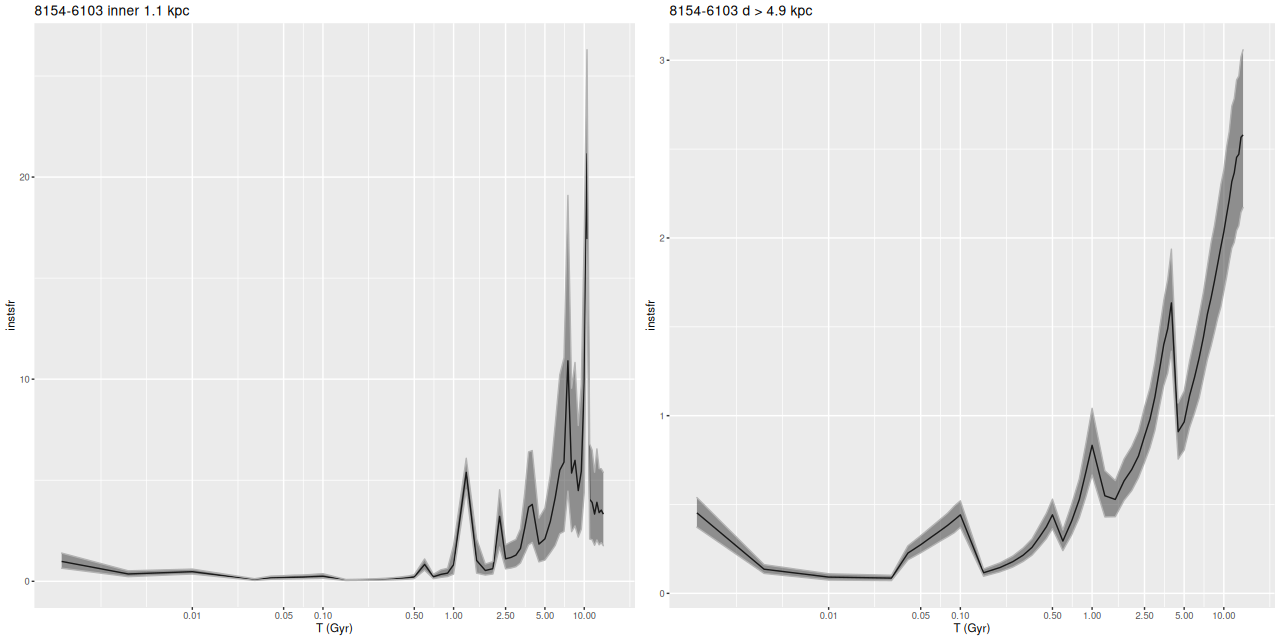
One last set of graphs that may be useful. These show cumulative star formation histories — basically the cumulative sum of mass contributions starting from the oldest time bin. This is similar to a mass growth history which is a popular visualization. In my calculation of the latter the contributions are to the present day stellar mass, so an allowance for mass loss and remnant mass is made3these come from the source of the SSP models and are themselves models. Probably they are somewhat better than guesses. These things are basically black boxes to users.. The graphs are for the central regions only. Note the major virtue of these is that the contributions of major episodes of star formation can be estimated at a glance.
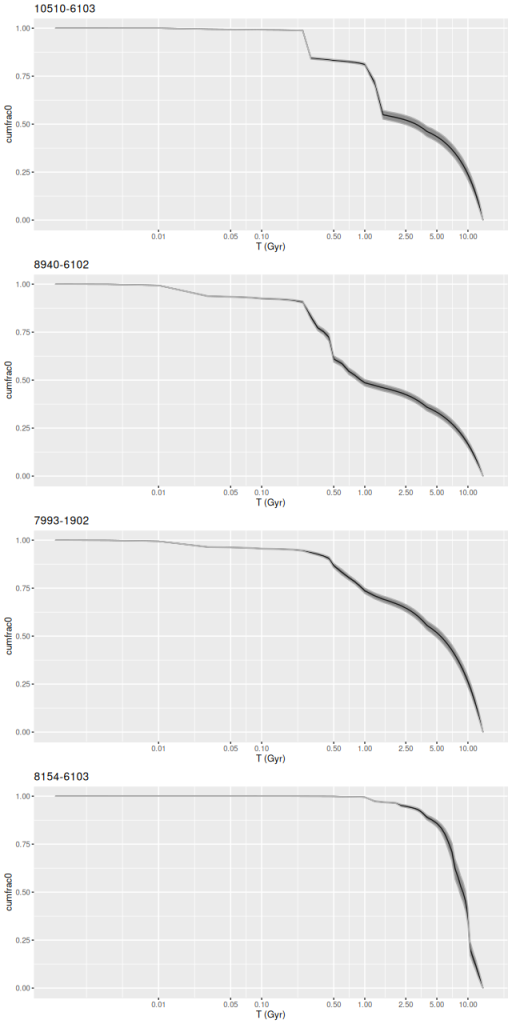
To wrap up this part of the post 3 of these galaxies are compatible with the “modern merger hypothesis,” that is they have experienced centrally concentrated but spatially wide spread starbursts. The reason two of them don’t have post-starburst characteristics in the Hδ – D4000 plane is their starbursts are still underway. The current burst of star formation contributes about 5-10% of the mass in the central regions of these two. How much more is available is unknown (at least to me until I get around to finding out if there are HI mass estimates available).
Future plans: I’ve completed model runs on the 24 “post-starburst” galaxies in the MaNGA ancillary program dedicated to them. I may have something to say about them. I also may have something to say about one of the Zoogems targets that I had a small part in selecting.
Continue reading “Journal notes: Haines et al. (2015), “Testing the modern merger hypothesis…””

